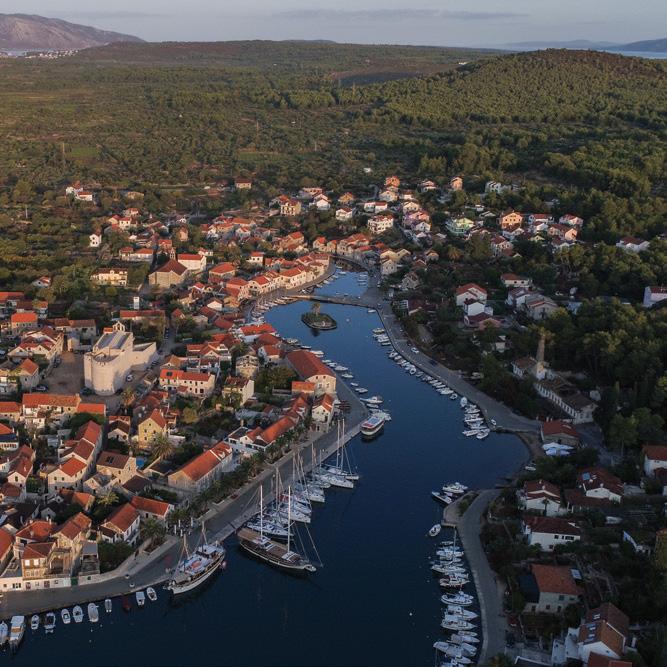




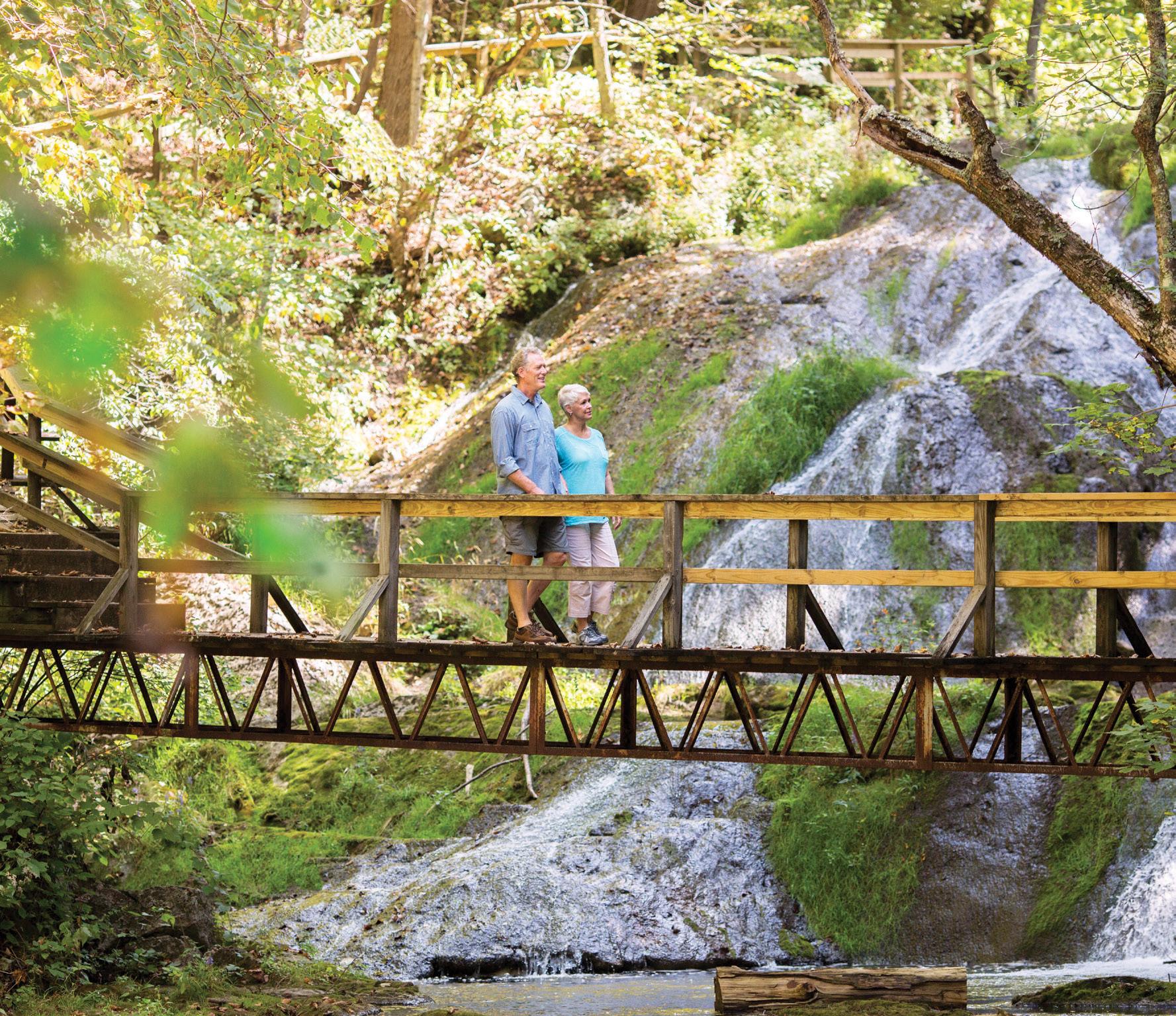

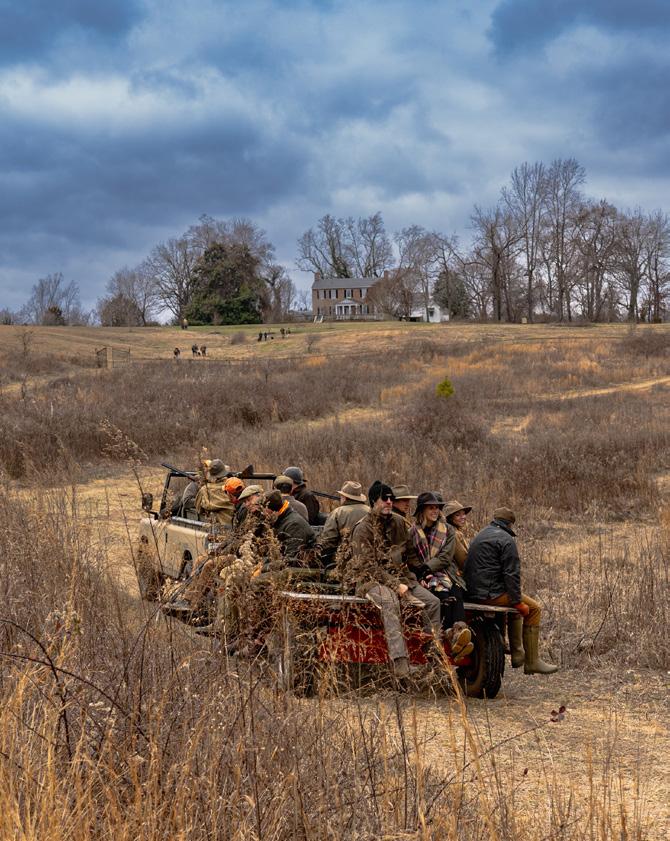
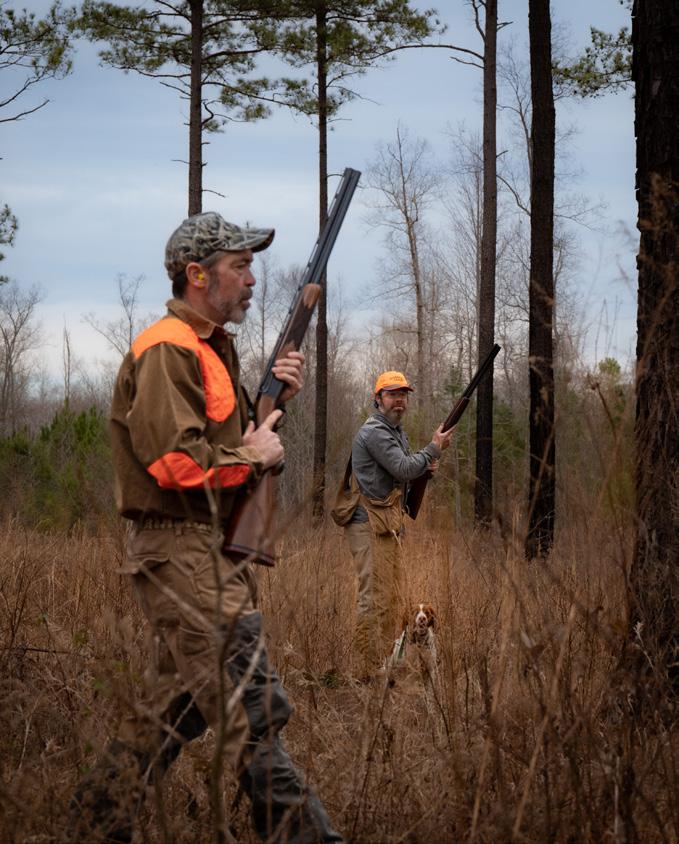

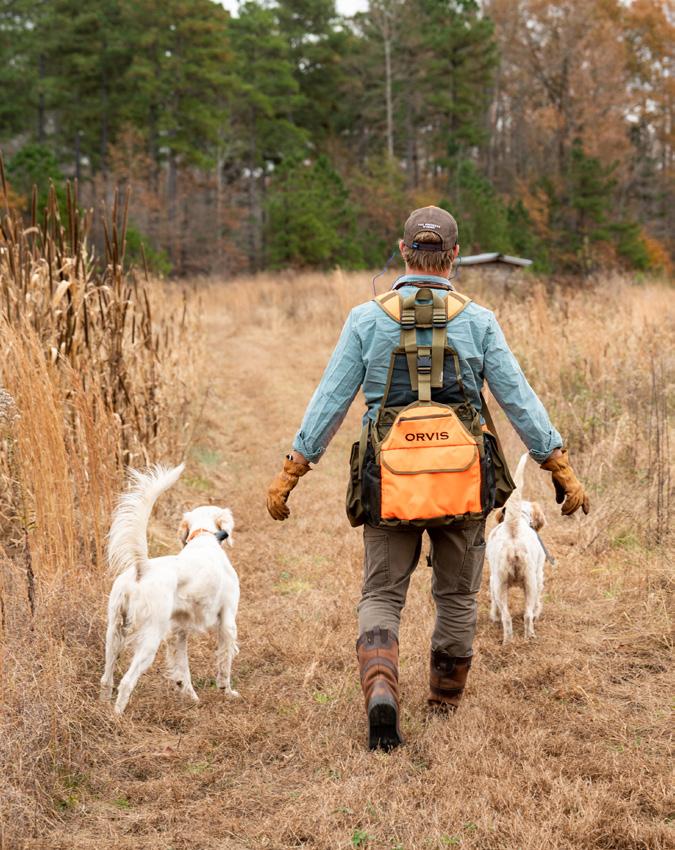
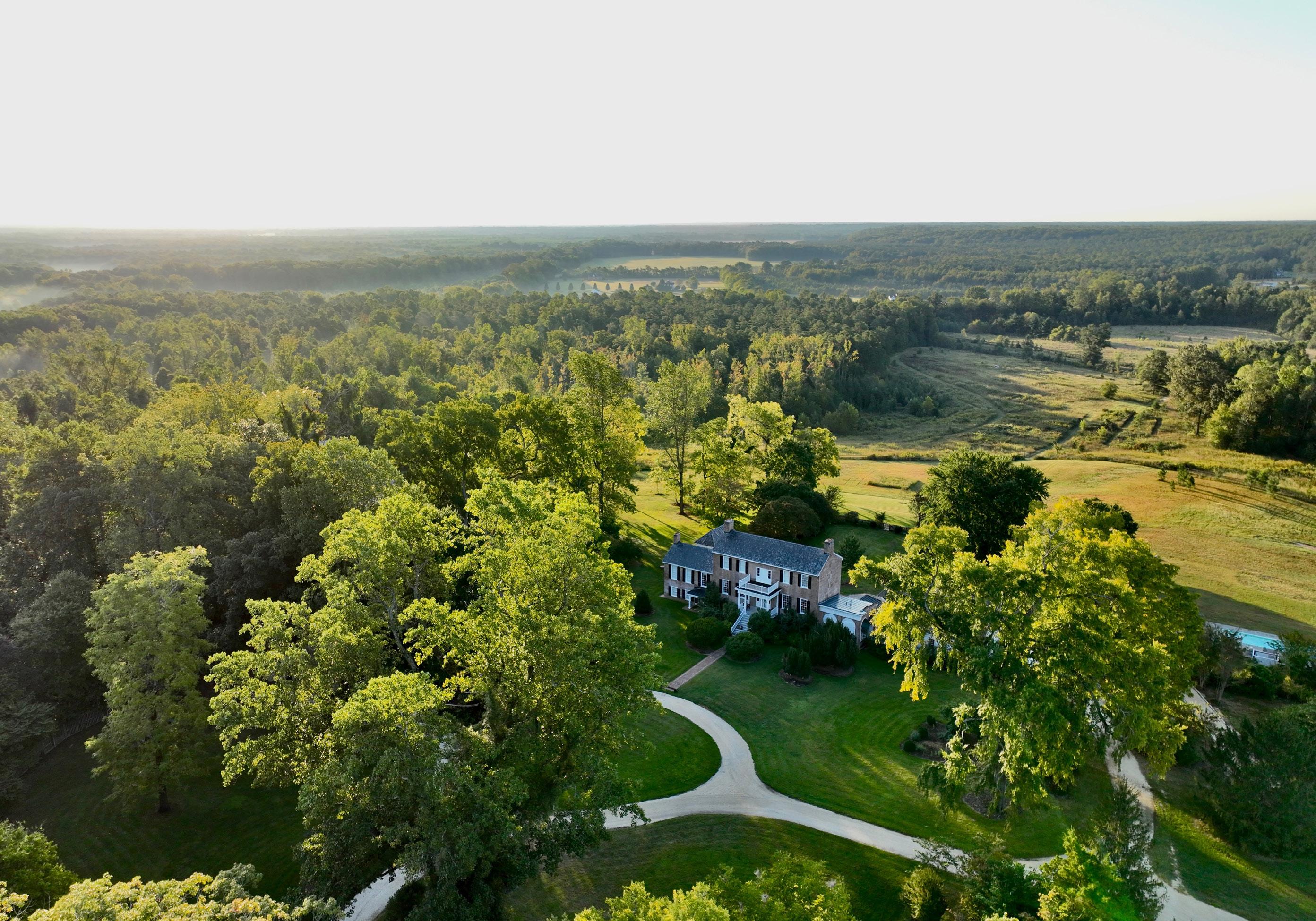
Located minutes to Richmond and a short drive to Washington DC, our hunting preserve has been cultivated and strategically prepared for upland hunting. There are several distinct and different hunting environments including traditional pine forests, open fields, and sloping hills. We provide our exceptional and experienced guides, professionally trained English Setters and Pointers, chef prepared gourmet food and local libations set amongst a beautiful and historic setting.
Contact us now to book your next hunt. Offering corporate hunting events and memberships.



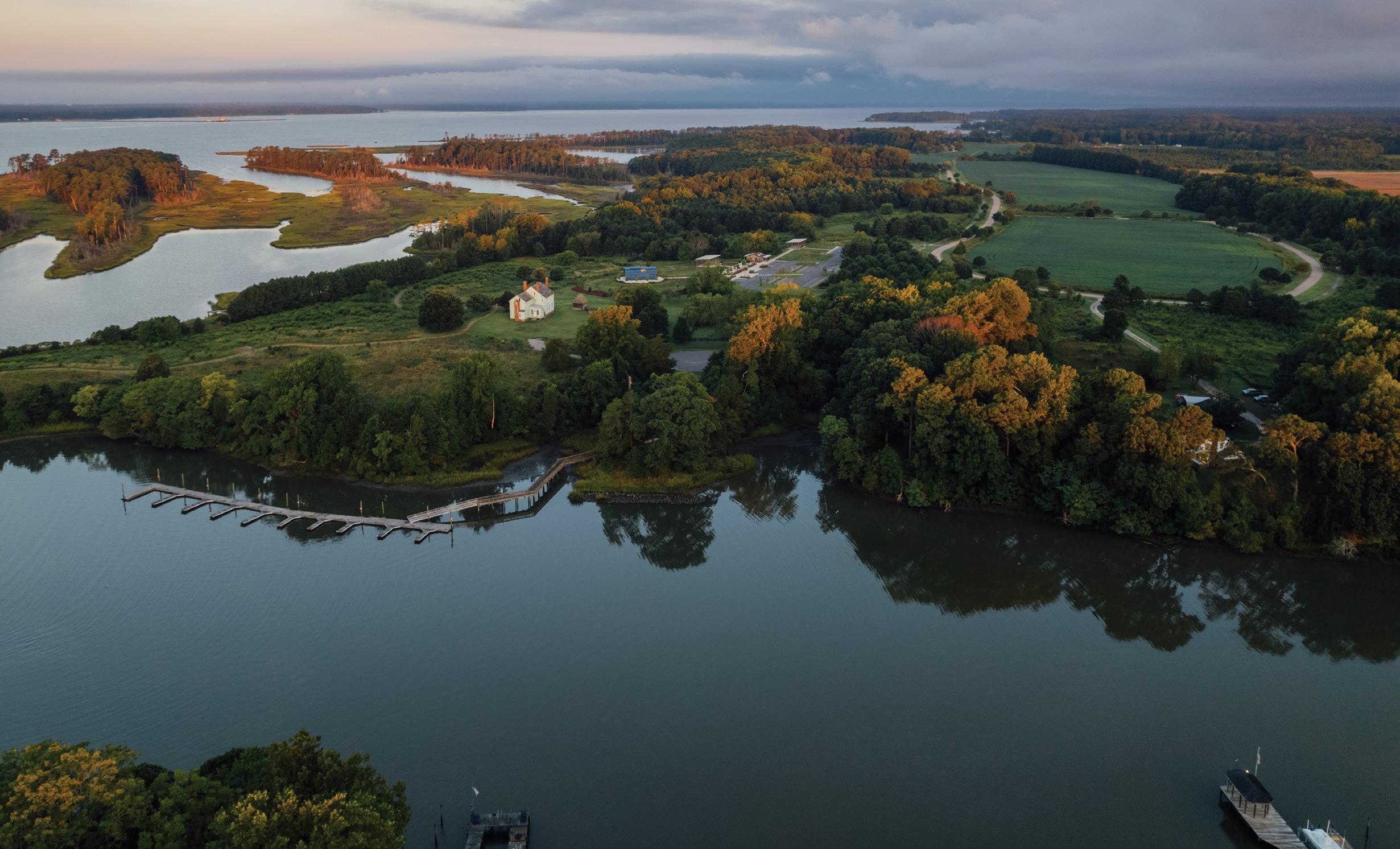









You can learn a lot from Alberto Rey, a Cuban-American painter, illustrator, filmmaker, educator, conservationist, writer and Orvisendorsed fly fishing guide who founded and directs a youth fly fishing program in Upstate New York.
Trout fishing in Virginia can be a mixed bag, but anyone who has cast a fly rod knows there’s always hope; your next cast may hook a hungry fish—or you may find the perfect pool full of fish around the next bend in the river.
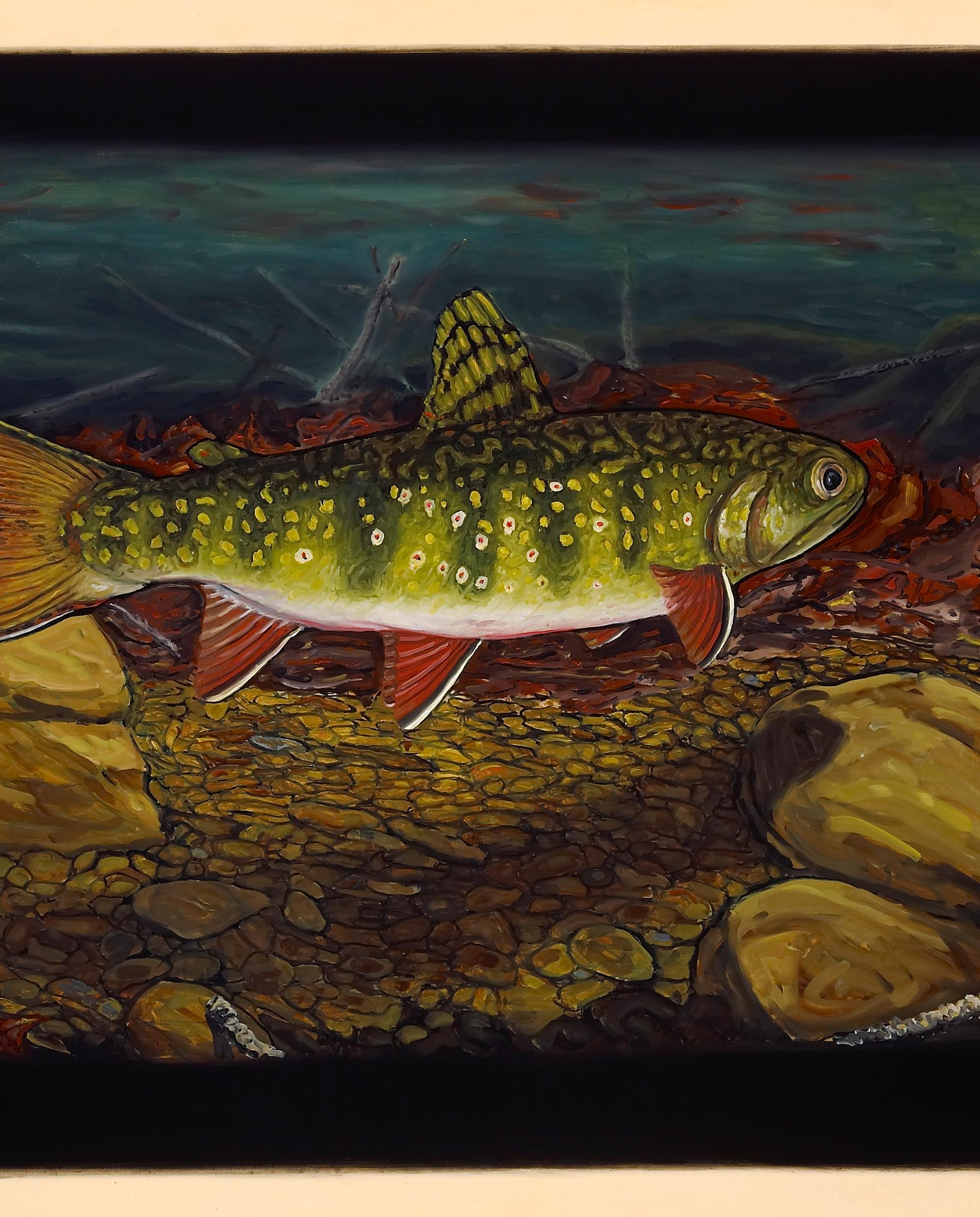
12
THE SOUND

In “Yellow Peril,” gritty blues revivalist Nat Myers offers a thought-provoking new take on a traditional sound.
18
From clothing and footwear to gear, gadgets and more, our staff writers review some of the best must-haves for fall.
22
RAISE A GLASS
Craft beer has exploded with a dizzying array of options, but here are a handful of Virginia’s oldschool, pioneering craft beers that still taste great.
Registered Maine Guide and bird dog trainer Michael Tuminaro shares his favorite breeds and tips for picking the right dog for you.
56 OPEN SPACES
Dennis Frye, the longtime chief historian at Harpers Ferry National Park and Civil War battlefield conservationist, works to preserve the evolution of the American story.
60
WELL FED
Hank Shaw, James Beard Award-winning author, shares his Virginia version of Brunswick stew, an amalgam of many recipes for Brunswick stew dating back to the 1870s.

In “Cracked: The Future of Dams in a Hot, Chaotic World” (Patagonia, May 2023, 320 pages), author Steven Hawley delivers the ugly truth about dams—and offers a pathway toward freeing our rivers.
Nat Myers, a Korean American blues revivalist with a deep, authentic voice, promotes his new album, “Yellow Peril.”
Photo by Tyler Zwiep

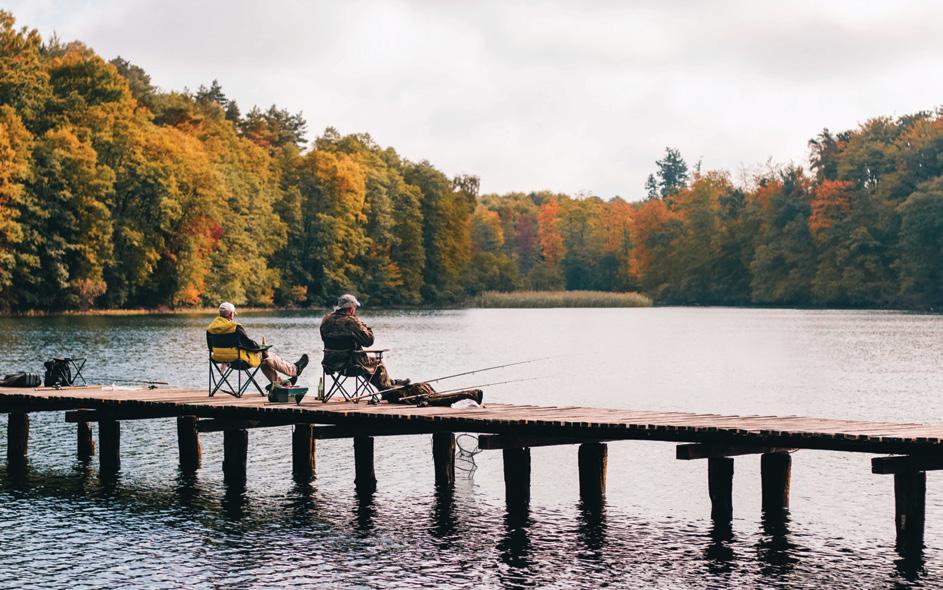

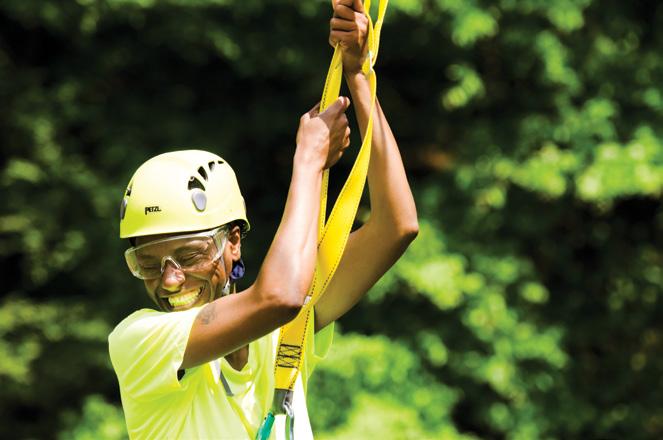
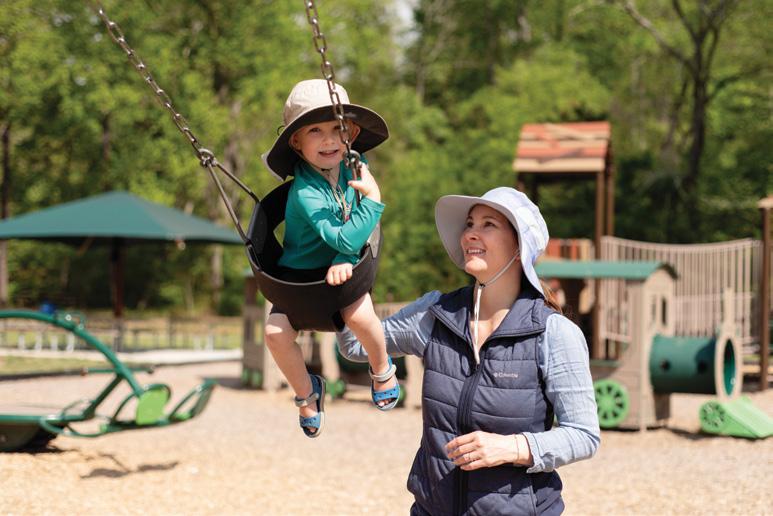


EDITOR IN CHIEF
Joe Shields
PUBLISHER
Blake DeMaso
CREATIVE DIRECTOR
Melissa Kennelly
FOUNDER
Hay Hardy
— EDITORIAL & PRODUCTIO N —
MANAGING EDITOR John kelly
EDITOR-AT-LARGE Eric Kallen
LIFESTYLE EDITOR Jedd Ferris

CONTRIBUTING EDITOR monte burke
CONTRIBUTING EDITOR hank shaw


DESIGNER/ART MANAGER Rebecca Cencewizki
— ADVERTISING & BUSINESS —
ASSOCIATE PUBLISHER Leah Woody
ACCOUNT EXECUTIVES
Katie Hartwell, Anita Vere-Nicoll, Anne Coles
BUSINESS MANAGER Melissa Gessler

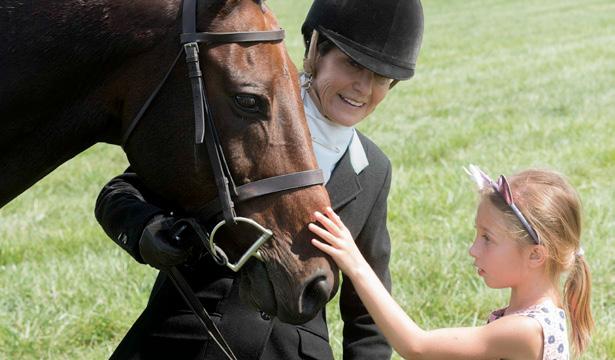
— DIGITAL MEDIA —
ONLINE DIRECTOR Craig Snodgrass
DIGITAL MEDIA SPECIALIST Shannon McGowan
VIDEO PRODUCTION jay alaimo and phil Conserva
— CONTRIBUTORS
GRAY KALLEN AND MICHAEL TUMINARO


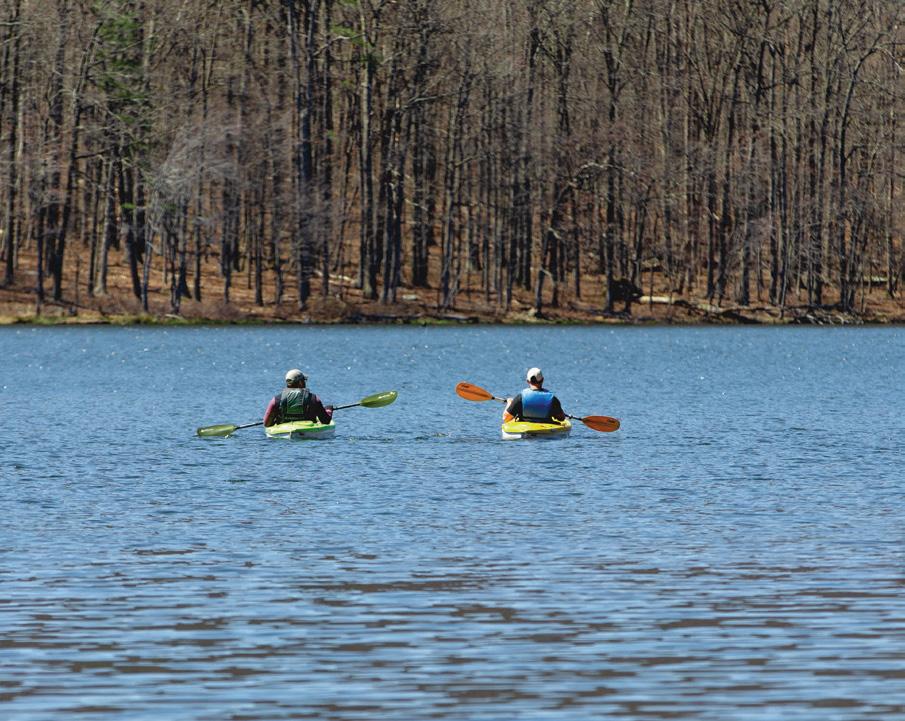

A frown is all one sees
The smile that lies flat, must be thanks to the above vibrations of the docking, As the crow flies, The fish swims, He swims like the crow flies, like the crow that flies with wings, he swims as if he has wings.
The wings must not bring him joy, seen in the smile that lies flat, Or maybe the smile that lies flat is actually thanks to the docking, but it can’t be that, It must be thanks to his friend’s flocks, and the neighboring rocks, or maybe the one who stalks, Yes, the one who stalks, the one turned many, all watching and casting, The one fisher turned many, the casting turned recasting, This is why the smile lies flat.
The Irish poet and playwright Oscar Wilde once said, “To expect the unexpected shows a thoroughly modern intellect.” Sometimes the best experiences are right under your nose. Expect the unexpected. Life is full of surprises.
Editor-at-Large Eric Kallen was certainly surprised during a recent trip to New Orleans. While there, he went to the French Quarter to see his friend and fellow sportsman Garrett Dutton and his band G Love & Special Sauce perform at the iconic House of Blues.
Before the show, Dutton introduced him to a young blues revivalist named Nat Myers. Kallen was immediately drawn to Myers, a Korean American who speaks with a Southern twang. Despite the musician’s maturity and success, Kallen noted that Myers was young and closer to the ages of his children.
He also quickly discovered that Myers, like the blues greats before him, also uses music to address societal ills. In “Yellow Peril,” the title track of his new album, the young artist takes aim at racism, inspired by his own experiences.
“The sounds emanating from Myers’ steel resonator guitar were warm, deep and full of nuance,” Kallen recalled. “His fingerpicking was precise, intense and drew in the audience. When he sang, his voice was soulful and lyrical, reminiscent of the early blues singers whose restless wanderings along the Mississippi Delta are so well documented.”
Kallen experienced another unexpected turn of events when his son won a high school poetry contest for his poem about a painting that he admired at the Fralin Museum of Art at the University of Virginia. The subject of his poem, “Biological Regionalism: Bonefish, Jardines de la Reina, Cuba” by Alberto Rey, intrigued Kallen, so much so that he decided to contact the artist and later asked me to feature him in this issue. What a nice surprise.
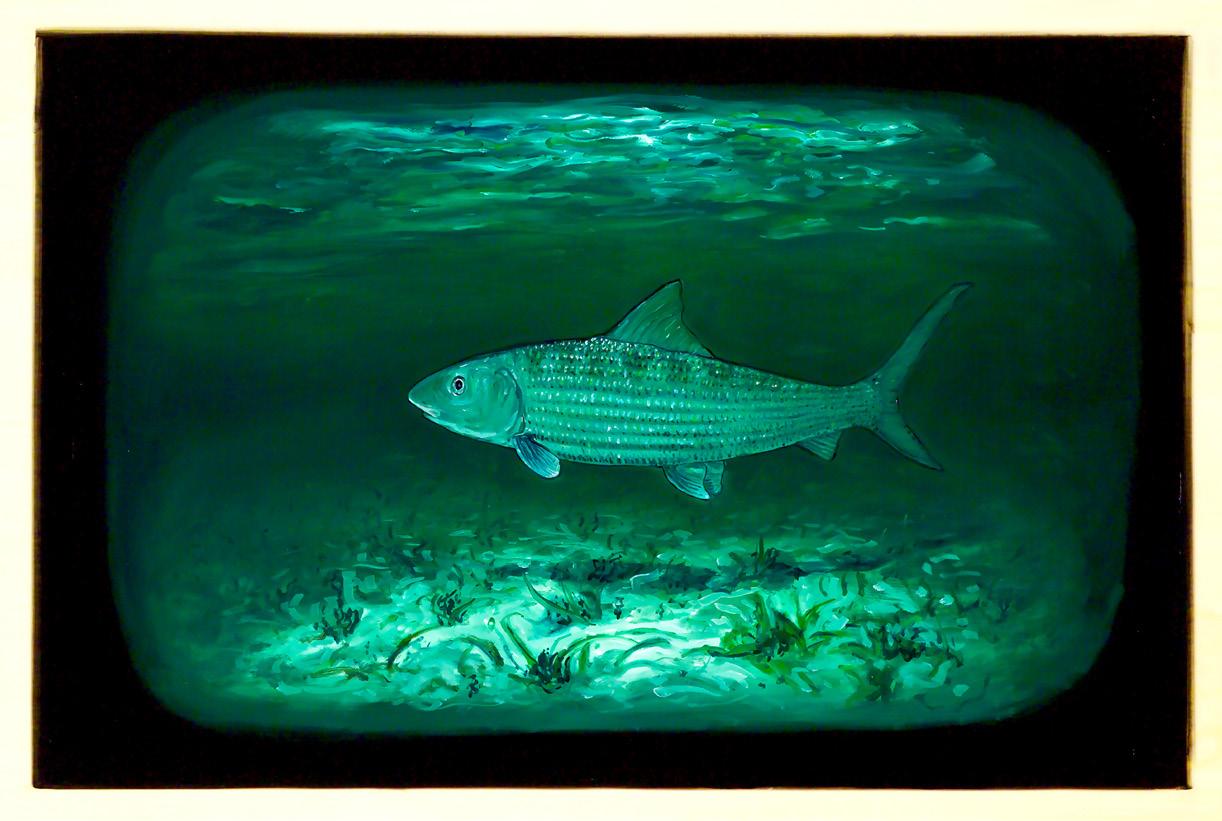
Rey was born in Havana, Cuba, in 1960, received political asylum through Mexico in 1963 and moved to the United States with his family. Here, he discovered his love for drawing and painting and went on to embrace the arts in his academic and professional endeavors.
Now a retired and distinguished professor of fine arts, Rey is a prolific and successful artist, published author and content producer. He paints in his barn and exhibits his work globally in renowned galleries and museums. Rey is also a conservationist who founded and directs a youth fly fishing program. And he’s an Orvis-endorsed guide who takes clients fly fishing for steelhead on a stream behind his home in Upstate New York.
I trust you expect to discover the unexpected in our Fall issue. Thank you for reading these words. They are intended for people with a modern intellect.



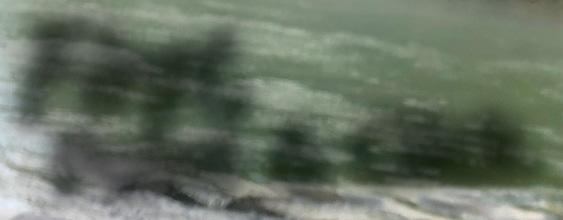








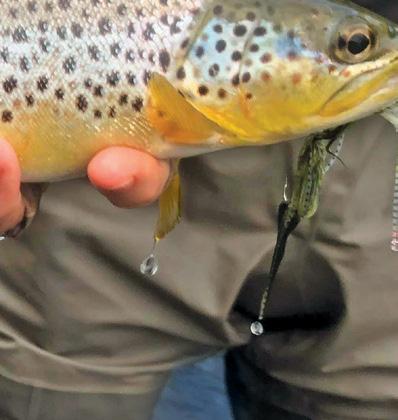


Since 1993, our focus has been on preserving our clients’ financial assets, managing growth, and efficiently transferring wealth from one generation to another. This stability of purpose allows us to provide the high level of personal service our clients expect.
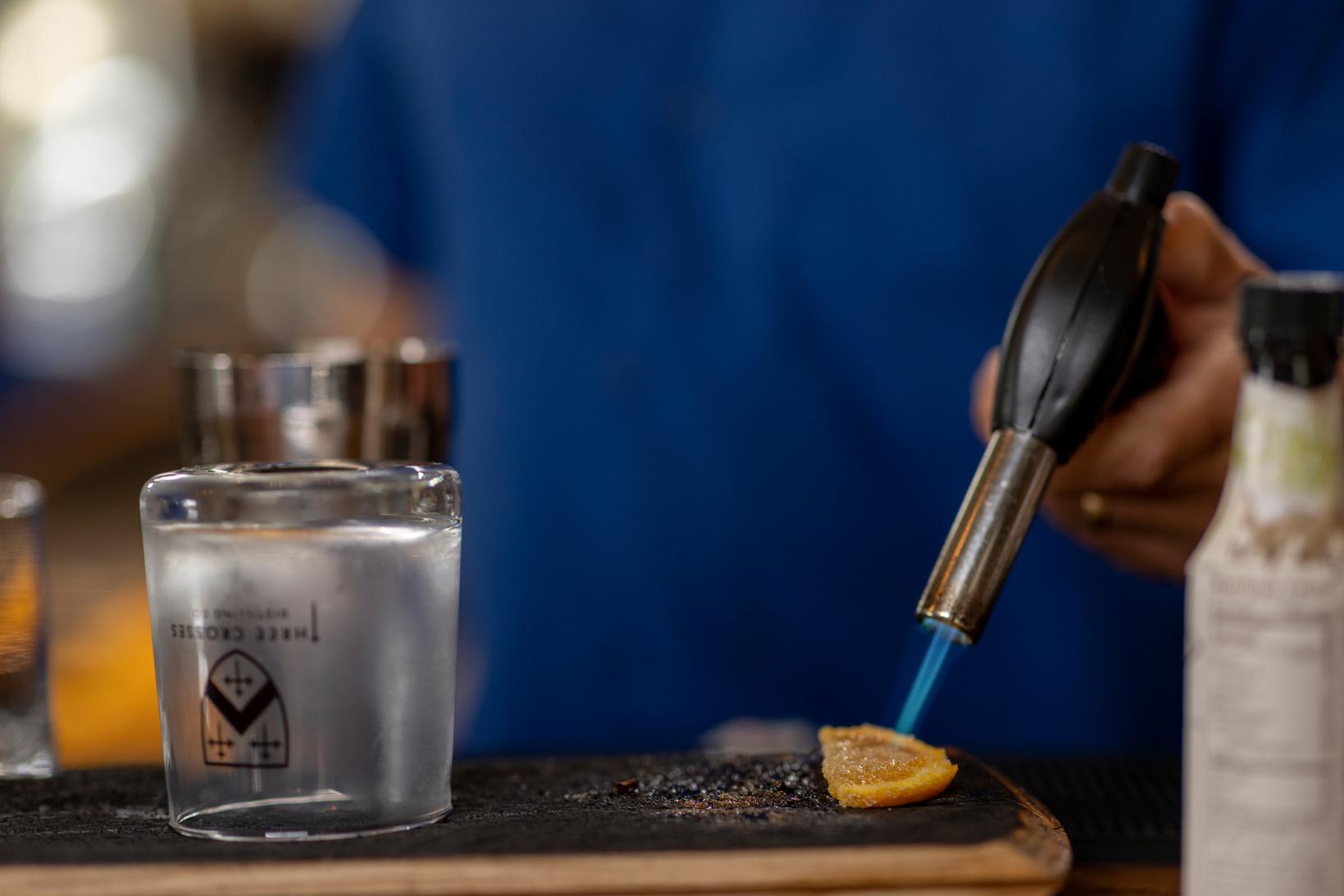

Providing:









• Asset Management
• Tax-Managed Investing









• IRA Rollovers

• Financial Planning




• Trust & Estate Services
Celebrating 30 Years of Excellence
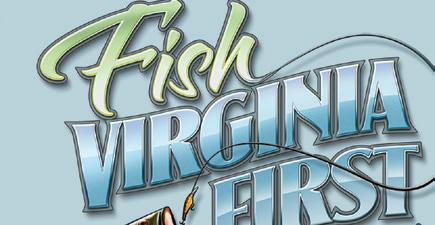












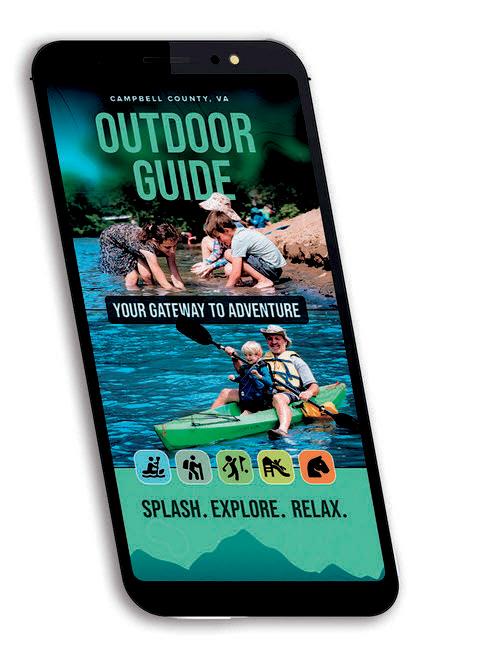

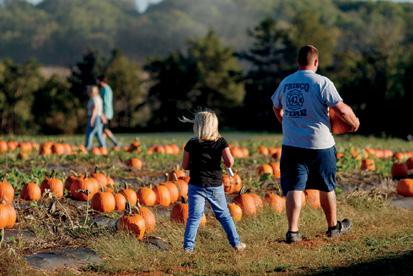
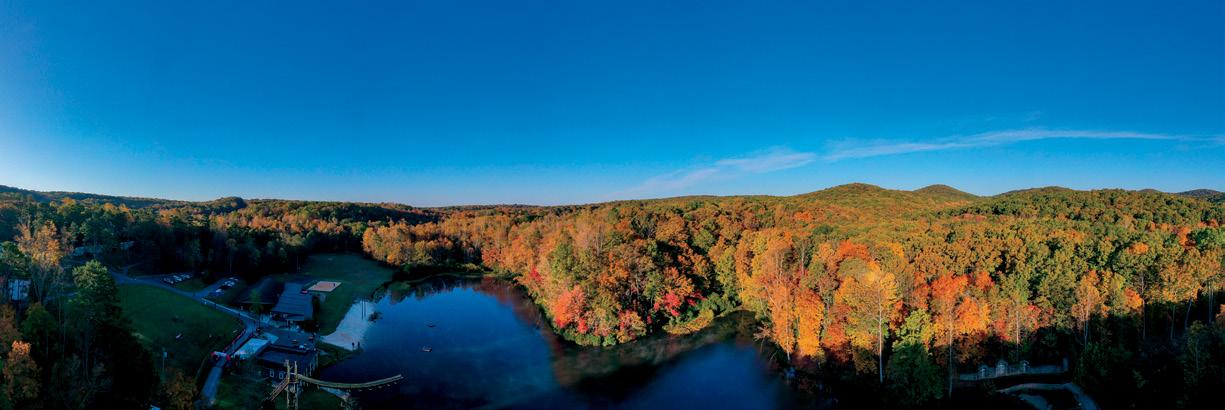











Emerging Artist Nat Myers Offers a Thought-Provoking New Take on a Traditional Sound
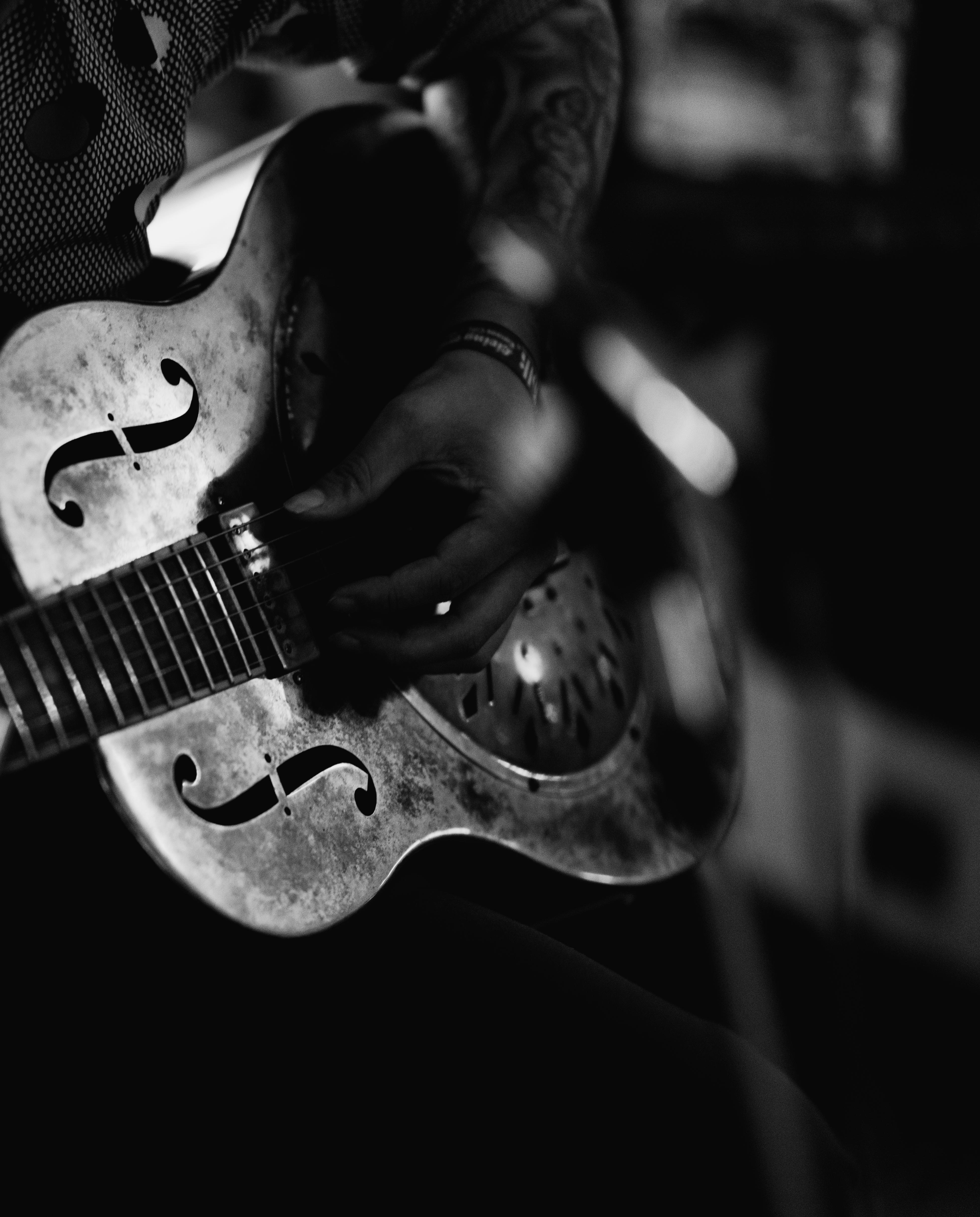 STORY BY JEDD FERRIS
STORY BY JEDD FERRIS

Nat Myers is a gritty blues revivalist with a deep, authentic voice. So, it makes sense that his songs caught the ear of the Black Keys’ Dan Auerbach, who’s well known for rebooting traditional sounds with a new edge, both on stage and in the studio.
After seeing video clips of Myers performing songs on social media, Auerbach invited the up-and-comer to Nashville to woodshed more tunes. They ended up cutting a dozen songs in three days, which resulted in Myers’ new album, “Yellow Peril,” a debut effort

released on Auerbach’s Easy Eye Sound label back in June.
The record features rustic, fleet-fingered guitar picking and head-bobbing tempos, while also showcasing Myers’ savvy way with words. Before fully focusing on music, the singer-songwriter studied poetry at the New School in New York. While living in the city, Myers started busking on street corners and applied what he was learning to craft vivid lyrics, set in songs that call back the rural sounds of Delta and hill country blues.
In album standout “Roscoe,” a darkly toned tune
PHOTOS COURTESY OF RUDY SALGADO, RIVER CITY TINTYPE. THIS 19TH CENTURY PHOTOGRAPHIC TECHNIQUE INVOLVES COATING A METAL OR GLASS SURFACE WITH LIGHT-SENSITIVE CHEMISTRY TO CREATE AN IMAGE. FOR MORE INFORMATION, SEE @RIVERCITYTINTYPE OR VISIT RIVERCITYTINTYPE.COM.
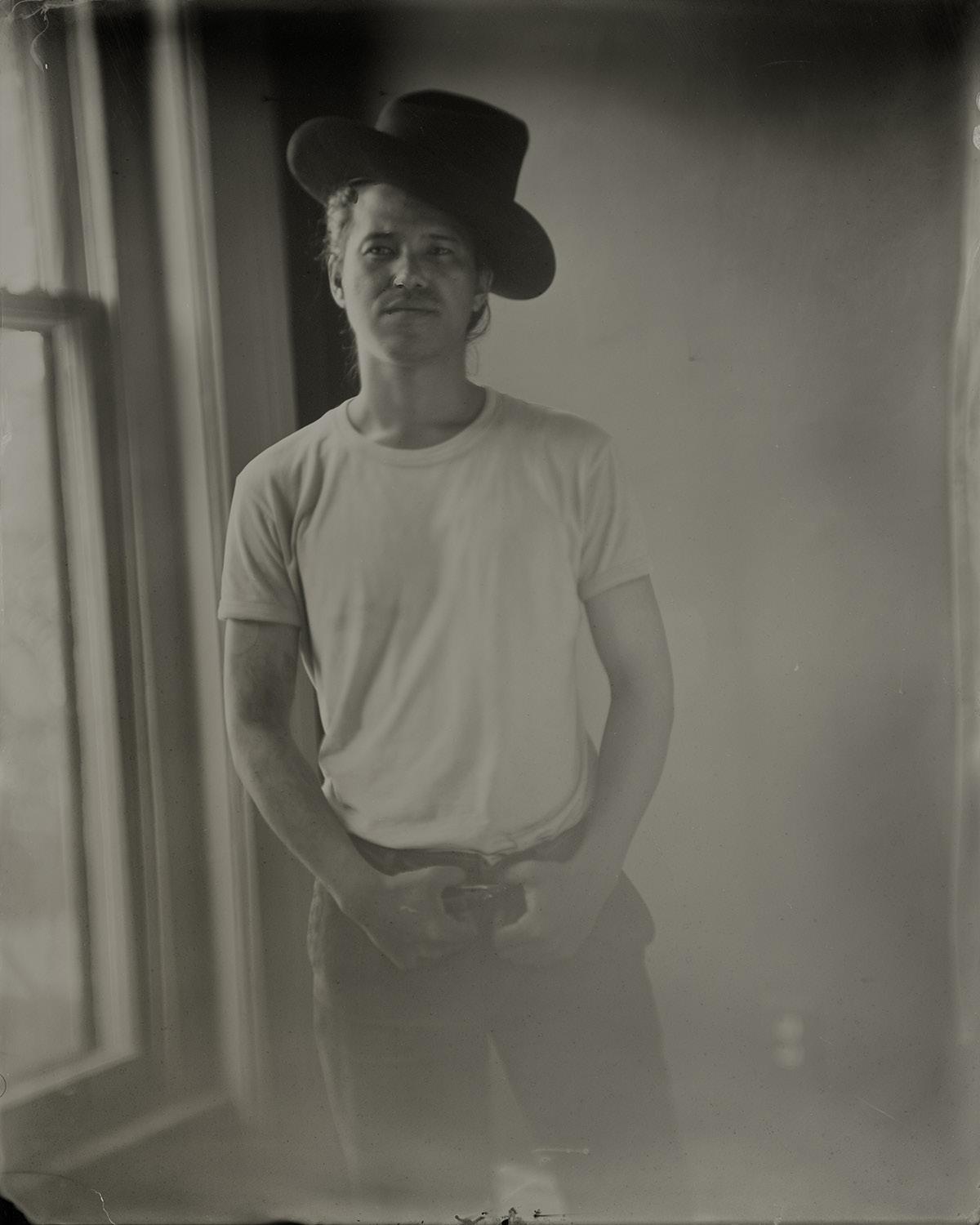


An Old-School Performance at
I recently came across a passage in Bruce Springsteen’s autobiography “Born to Run” (Simon & Schuster, 2017, 528 pages) in which he describes his feelings after recording “Greetings from Asbury Park,” his first album.
“Your early songs emerge from a moment when you’re writing with no sure prospect of ever being heard,” Springsteen writes. “Up until then, it’s just you and your music. That only happens once.”
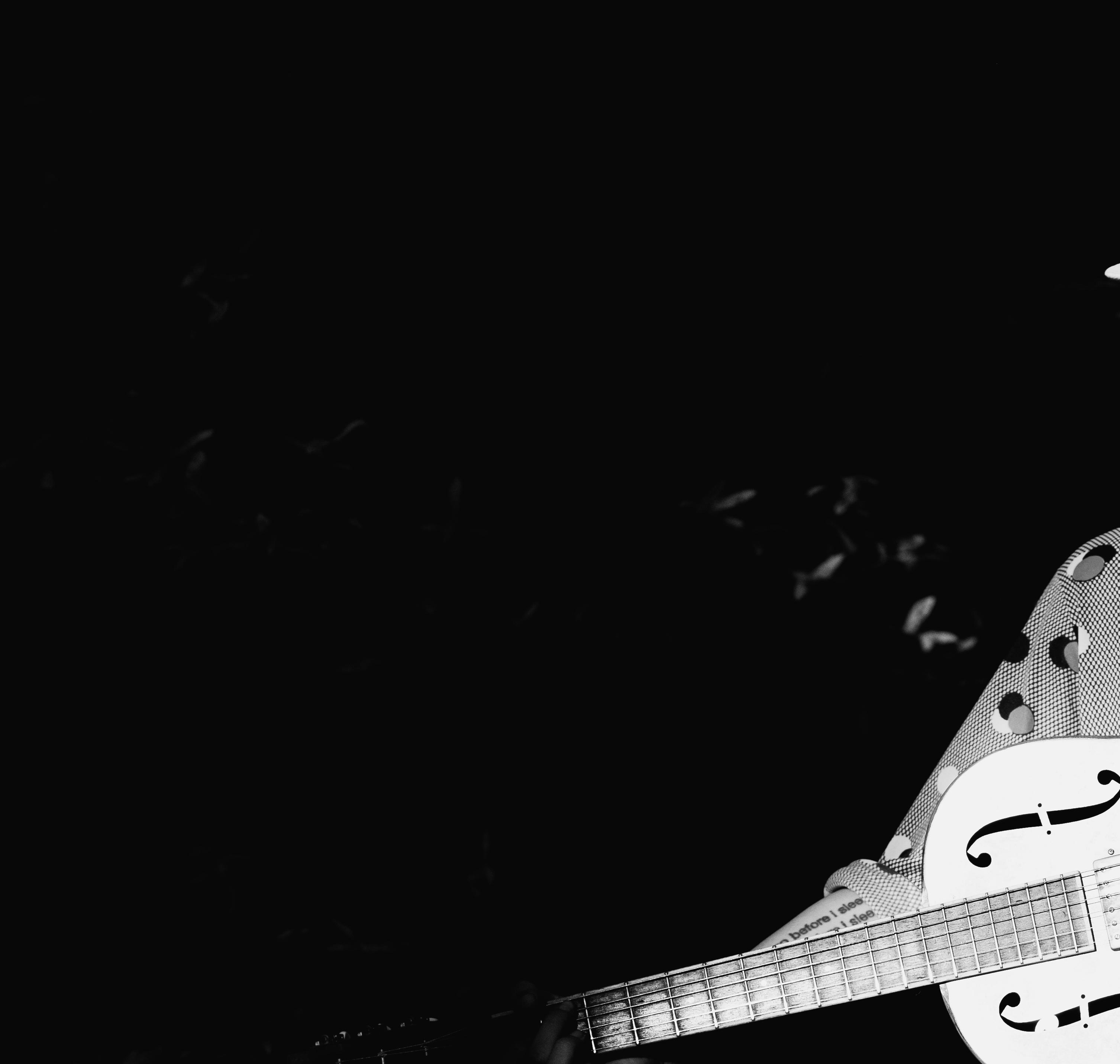
Being introduced to new music is one of life’s great pleasures. Hearing a new sound or song, then forming an impression of the artist in your mind’s eye, has been going on since the advent of recorded music.
Recently I saw G Love & Special Sauce performing at the iconic House of Blues in New Orleans’ French Quarter.
Garrett Dutton (G Love) is one of the most dynamic
talents in contemporary blues music and one of the nicest and most sincere people I know. I’ve seen him play live several times. I’ve also shared experiences with him outside music—fly fishing for bonefish and hiking with our wives in the Utah desert.
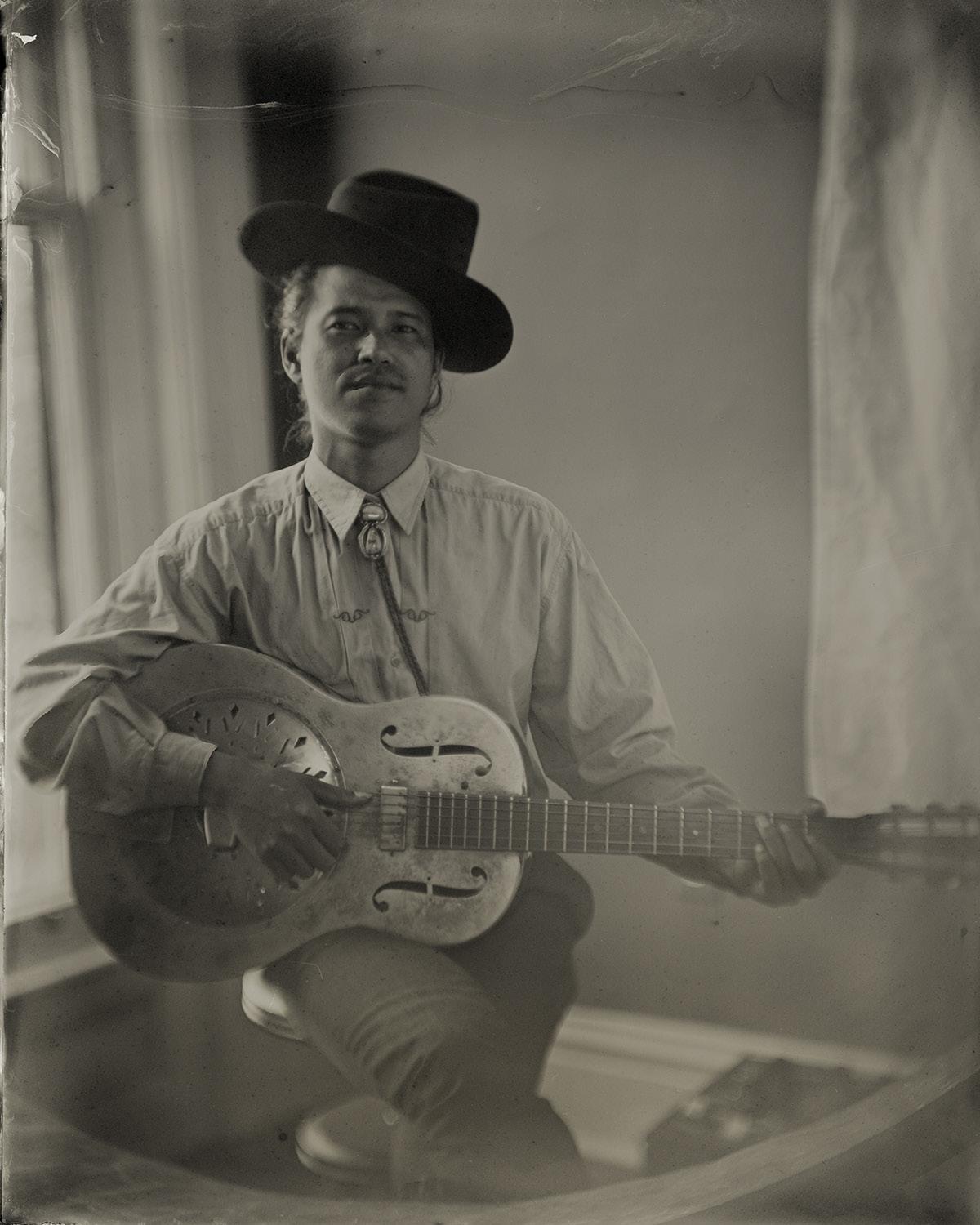
I caught up with Dutton before his show. After a brief conversation, he introduced me to a young blues musician named Nat Myers.
Dutton had heard Myers cover some of Big Bill Broonzy’s tunes and was blown away. Dutton later told me, “I love Big Bill, and when I listened to Myers’ interpretations of these blues classics, I called my agent and told him to invite Myers to join us on our tour.”
As we shook hands and introduced ourselves, I was immediately drawn to Myers. He sported a Billy Strings Fall
Tour orange camouflage trucker hat, worn slightly askew, and he spoke with a Southern twang that was not wholly familiar to me. I quickly realized that despite his maturity, Myers was much closer in age to my kids than to me.
Myers and I listened intently as Dutton shared stories about his previous shows at the House of Blues, including when he opened for the Allman Brothers back in his early years. When questioned, Myers spoke with unbridled excitement about his forthcoming album, his first, and confessed to being nervous but excited about the show that was scheduled to start shortly. This young musician was living his dream.
I secured my spot in the front as the crowd began to fill the auditorium and waited for the music. More people brought more energy, and by the time the lights dimmed and Myers walked out onto the stage, the house was packed.
Myers stood alone armed only with his steel resonator
co-written with Alvin Youngblood Hart, Myers narrates a cautionary tale about characters with sinister intentions.
Like the blues greats before him, he also uses music to address societal ills. In the title track, “Yellow Peril,” Myers takes aim at racism, inspired by his own experiences as a Korean American. Amid evocative acoustic slide playing, he laments old stereotypes and, towards the song’s conclusion, sings, “There never ever was no difference ‘tween you and I.”
“I wasn’t raised with a clear understanding of my Asianness, and I didn’t really have a consciousness about who I was as a Korean American until very recently,” Myers said in a statement about his new album. “I want this record to raise my folks up.”

Myers has been on the road touring in support of the new album. He will be back in Nashville in September, performing multiple sets at the Americana Music Fest.
“Yellow Peril”
Myers offers biting commentary on racist stereotypes in the title track of his debut album, made with Dan Auerbach of the Black Keys.
“Roscoe”
Hypnotic, hill country guitar picking propels this dark tale that Myers co-wrote with blues great Alvin Youngblood Hart.
“Heart Like a Scroll”
Myers gets sentimental in this back-porch love song that sounds transported from a Mississippi juke joint.
guitar with his hat still tilted to the side. As he sang his first song, I must admit that whatever impressions I had formed when we met were completely wrong. The young unassuming artist played the blues like one of the old masters. The sounds emanating from his guitar were warm, deep and full of nuance. Myers’ fingerpicking was precise, intense and drew in the audience. When Myers sang, his voice was soulful and lyrical, reminiscent of the early blues singers whose restless wanderings along the Mississippi Delta are so well documented.
As Myers progressed through his set, I made eye contact with the guy standing next to me and said, “This kid plays the blues the way the music is supposed to be played.” My new friend raised his beer and nodded in agreement. Then we turned our attention back to Myers to listen and enjoy.
— ERIC KALLEN, EDITOR-AT-LARGE BY STAFF WRITERS
BY STAFF WRITERS

Hoka has developed a reputation for making some of the most comfortable running shoes on the planet. With the introduction of their new Transport shoe, Hoka brings the same industry standard combination of remarkable comfiness and stability to a shoe that is geared for the performance-oriented lifestyle crowd. The Transport’s toggle-lace system simplifies tightening the shoes. The cushion on the compression-molded midsole offers just the right mix of comfort and stability for those who venture on more unstable terrain, and the Transport’s Vibram outsole provides traction and confidence in every step. With the Transport, Hoka has created a shoe that appeals to people who like to do more than just pile on the miles. As a bonus, Hoka has extended its comfort promise beyond your feet with the versatile Transport pant that’s perfect for traveling and commuting. $140; hoka.com

We’ve all been there before. A storm knocks the power out, and when you reach for your flashlight, you realize the batteries in it are dead. Pale Blue Earth offers a unique and innovative approach to rechargeable batteries with its new fast-charging lithium-ion batteries. The supplied USB-C charging cable (capable of charging four batteries at once and obtaining a full charge in an hour) plugs directly into the batteries, eliminating the need for additional charging hardware and unnecessary environmental waste that comes with single-use batteries. The batteries are good for more than 1,000 charging cycles, and the on-board smart technology provides safe charging. Additionally, the built-in LED charging indicator helps make sure you see your way through the next storm and beyond. $29.99 (4-pack); paleblueearth.com
Once you park your new truck in the driveway, it’s time to find the perfect accessories to complement your ride. Decked has earned praises for its innovative, high-quality truck bed storage systems. In addition to its truck bed drawer and cargo slide systems, the brand has crafted a toolbox that is second to none. Rather than throwing a bunch of sheet metal into the design, Decked has incorporated molded polymers that will never rust, dent or corrode. The Decked toolbox has a steel-reinforced, single-lock lid that makes it nearly impossible to open without a key and features a rubber gasket that keeps the gear inside dry and safe from the elements. The innovation hardly stops there. Decked has engineered a folding ladder that extends from the toolbox so you can access your things safely and easily without having to repeatedly climb in and out of the truck. The ladder folds neatly into a small footprint, which saves valuable storage space. After you buy this toolbox, your list of accessories you want or need for your truck just got shorter. $899, $1,099 with ladder; decked.com
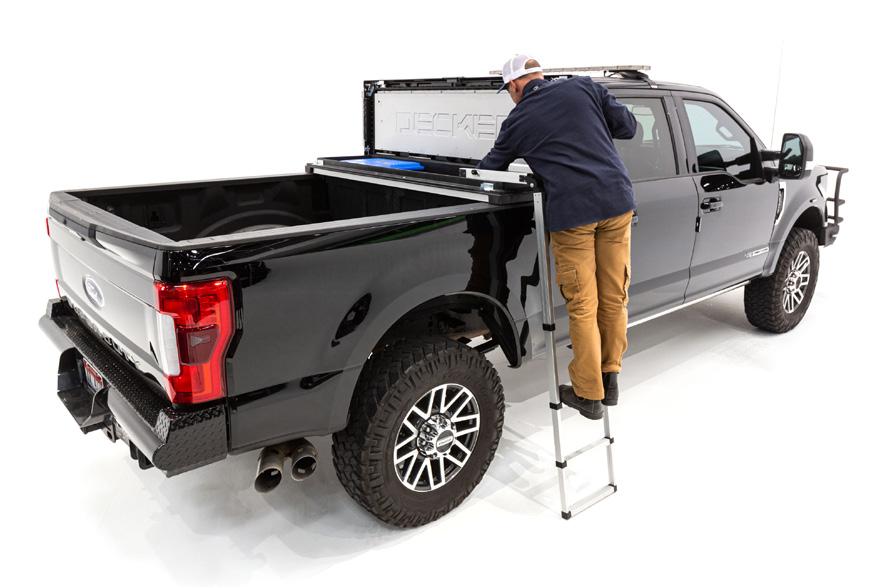
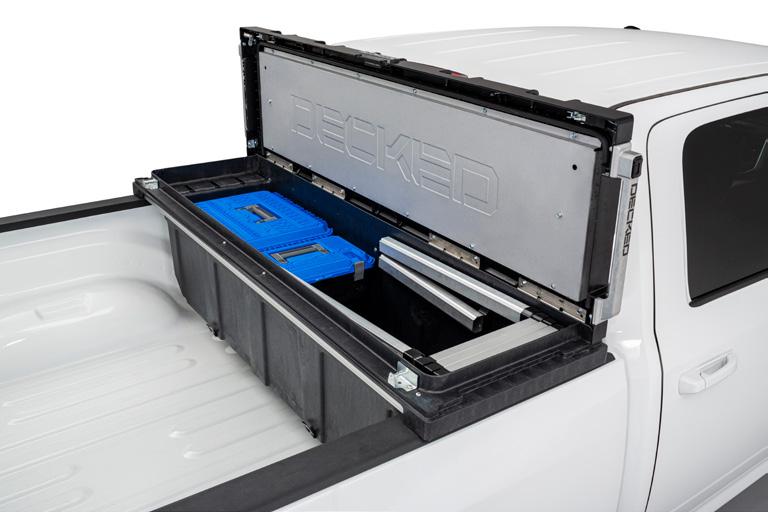
TRUEWERK WORKWEAR, T2 WERKPANT [4]

Bringing a modern approach to the design and manufacturing of apparel for tradesmen and women, Truewerk’s T2 WerkPant has a great deal to offer people who enjoy the outdoors. The T2 WerkPant’s innovative, three-season soft-shell material provides comfort, durability and mobility. Water-resistant and windproof, the T2’s double-woven fabric, double-stitched seams and articulated knees deliver the ultimate in protection against the elements and general wear and tear. Best of all, the T2 comes with eight pockets, practically guaranteeing you can find a place to store just about everything. $79.00; truewerk.com
BIOLITE, ECOZOOM VERSA ROCKET STOVE [5]
The next time you decide to head out for a few days off the grid, check out BioLite’s Versa Rocket Stove as an alternative to more traditional gas-powered camping stoves. The Versa is a dual-fuel stove tthat burns small pieces of wood or charcoal to generate the heat. The Versa’s vertical combustion chamber efficiently delivers intense smoke-free heat to a cast-iron stovetop designed to accommodate both flat and round bottomed cookware. Biolite’s Versa Rocket Stove compacts easily and is sturdy and simple to move, making it a perfect option for your next camping trip. $159.95; biolitenergy.com

Finding comfortable, functional and safe hearing protection has long been a challenge for shooters and hunters. Bulky headphones make it difficult to shoulder a gun and disposable foam earplugs rarely survive a session at the range. Walker’s new Disruptor earbuds bring a game-changing solution to the market. The Disruptor earbuds are designed to use lightning-fast reaction times to cancel harmful noise levels and ensure optimal hearing protection. In addition, the earbuds provide sound enhancement and active noise cancellation that enable you to hear what you need to hear so you can keep wearing them when you want to have a conversation. They even come with Bluetooth capabilities so you can make phone calls and listen to music; the earbuds come with five programmed ambient sound settings to tailor the listening mode based on your activity and environment that can be accessed via the Walker Link app. And finally, the Disruptor’s rugged USB charging case makes it easy to store, transport and charge so you won’t get caught without ear protection the next time you are out with your gun. $249.99; walkersgameear.com


Finding a way to get your gear where you need it is a lifelong challenge for all sportsmen and women. Roam Adventure Co. has a collection of rugged cases in a variety of sizes and configurations that are sure to meet your needs. The 132L case is the granddaddy of them all—large enough for your big items, and when partnered with their Lid Organizer, capable of providing flexible storage and easy access to smaller items. The 132L’s heavy-duty construction is sure to hold up in any conditions, and the six steel lockable hinges and dust and waterproof gasket-sealed lid will keep your items inside safe and secure. The 132L case also comes with an extendable handle and rubberized wheels for easy transport. And for those of us who’ve had sore fingers after an inadvertent lid slam, it’s important to note that this case comes with gas struts on the lid that prevent accidental lid closings. All in all, this case offers a high-quality, functional way to secure and transport anything you may need. $469.00; roamadventureco.com
As someone who likes to travel and carry a camera, I’m always on the lookout for a great backpack to take with me on my trips. Peak Design has a strong reputation for making innovative, high-quality backpacks and bags. Their Totepack offers a unique look and an interesting approach to an all-around day-to-day carry. The Totepack comes with backpack straps that can be unhooked and tucked away if not in use, as well as padded leather carry straps on the top of the bag. The bag’s 20-liter size is great for day trips, and it comes with flexible dividers you can remove and customize to accommodate a wide range of photo carry options. You can easily access the bag through the top, which can be sealed with a waterproof zipper, or through either side of the bag, which is great if you need to pull out a camera while leaving the bag on your shoulder. Even though this bag might not be your first choice for an extended trip, it’s perfect for a day when you require a simple, clean, compact bag with a modern design $179.95; peakdesign.com

Immersed in the heat of summer, it’s hard to fathom a cool fall evening. But when the time comes (and it can’t come soon enough), there’s no better way to greet the cooler temperatures than with a nice fleece hoodie. Free Fly’s new Bamboo Lightweight Fleece Hoodie offers a ridiculously soft and comfortable layer for the chilly fall days and nights that are right around the corner. As is customary for Free Fly, the hoodie is made largely from natural bamboo, providing a super breathable, stretchy feel that moves when you move. The hoodie’s front pockets are perfect for warming your hands, and the lined hood offers additional protection if the temperatures drop. Free Fly continues to add products to a well-established lineup of outdoor apparel, and the new Fleece Hoodie is a welcome addition that should be a staple in your wardrobe very soon. The brand is launching its new Fleece Hoodie on Oct. 11, 2023. $98.00; freeflyapparel.com

 STORY BY JEDD FERRIS
STORY BY JEDD FERRIS
Craft beer has exploded in the past two decades, as microbreweries across cities and small towns keep cranking out small batches of hazy IPAs and barrel-aged stouts. But among the dizzying array of options, it’s also enjoyable to pop a bottle of earlier beers that helped set the trends. Here are a handful of Virginia’s pioneering craft beers that still taste great.
Rural craft breweries were rare in 2007, when Blue Mountain started making high-quality beers from a scenic outpost with views of the Blue Ridge Mountains in Afton. Not long after opening, the brewery’s taproom was crowded with folks sipping on beers like Full Nelson, an extremely well-balanced pale ale that combines just the right amount of hoppy bitterness with a satisfying malty backbone. At 5.9%, it’s a great session beer for hop heads not looking to go overboard, and it’s still readily available on shelves in Virginia. bluemountainbrewery.com
Starr Hill Brewery opened back in 1999 with an accompanying small music hall in Charlottesville. The regional outfit has since expanded across the Commonwealth, with main production in Crozet and taprooms in Richmond, Roanoke, Lynchburg, Tysons Corner and Charlottesville. The Love is one of the beers from the brewery’s early days that’s still being made today. It’s a light, easy-drinking and unfiltered wheat ale with plenty of fruit-forward notes, thanks to the use of Hallertau hops and a special Bavarian yeast. And drinking this beer supports good causes. As part of Starr Hill’s mission to “Share the Love,” a dollar from each pint sold in taprooms is donated to local nonprofits. starrhill.com
As Virginia’s oldest craft brewery, Legend started making small batches of beer in Richmond in 1994, long before the capital city became a nationally renowned craft beer hub. Many of the mainstay brewery’s early creations still hit just right, including the rich and malty Brown Ale, which is perfect for sipping during crisp fall weather. The full-bodied ale is a bit sweet but balanced enough to enjoy a few at a time, offering notes of caramel, molasses, and coffee. Find it on shelves around the Commonwealth, or drink one at Legend’s beer garden right near the James River. legendbrewing.com

Parkway Brewing opened a decade ago and quickly became one of the most beloved breweries in the Roanoke Valley. The Salem-based operation is popular among the area’s thriving biking community, and some of Parkway’s beers are named after outdoor landmarks in the region. Get Bent, for instance, takes its name from Bent Mountain, located just off the Blue Ridge Parkway in Southwest Virginia. The liquid, though, gets its origin from the West Coast, as it’s an old-school IPA with bold flavors of pine and citrus that come from a generous amount of Cascade, Columbus and Cluster hops. Also, be on the lookout for Get Bent variety packs, which include grapefruit- and orange-flavored versions of this deliciously hoppy beer. parkwaybrewing.com
Devils Backbone’s Basecamp Brewpub is a must-visit during the fall. The expansive property, located near Wintergreen Resort in Nelson County, features a brewpub, distillery lounge and scenic Outdoor Meadows Bar, as well as an adjacent campground. While you’re there, be sure to drink a Vienna Lager, an easy-drinking amber lager that the brewery has been pouring since it opened in 2008. The malt-forward beer made with German noble hops is smooth and not too sweet, and the take on a traditional European brew has earned Devils Backbone multiple awards at the Great American Beer Festival. dbbrewingcompany.com




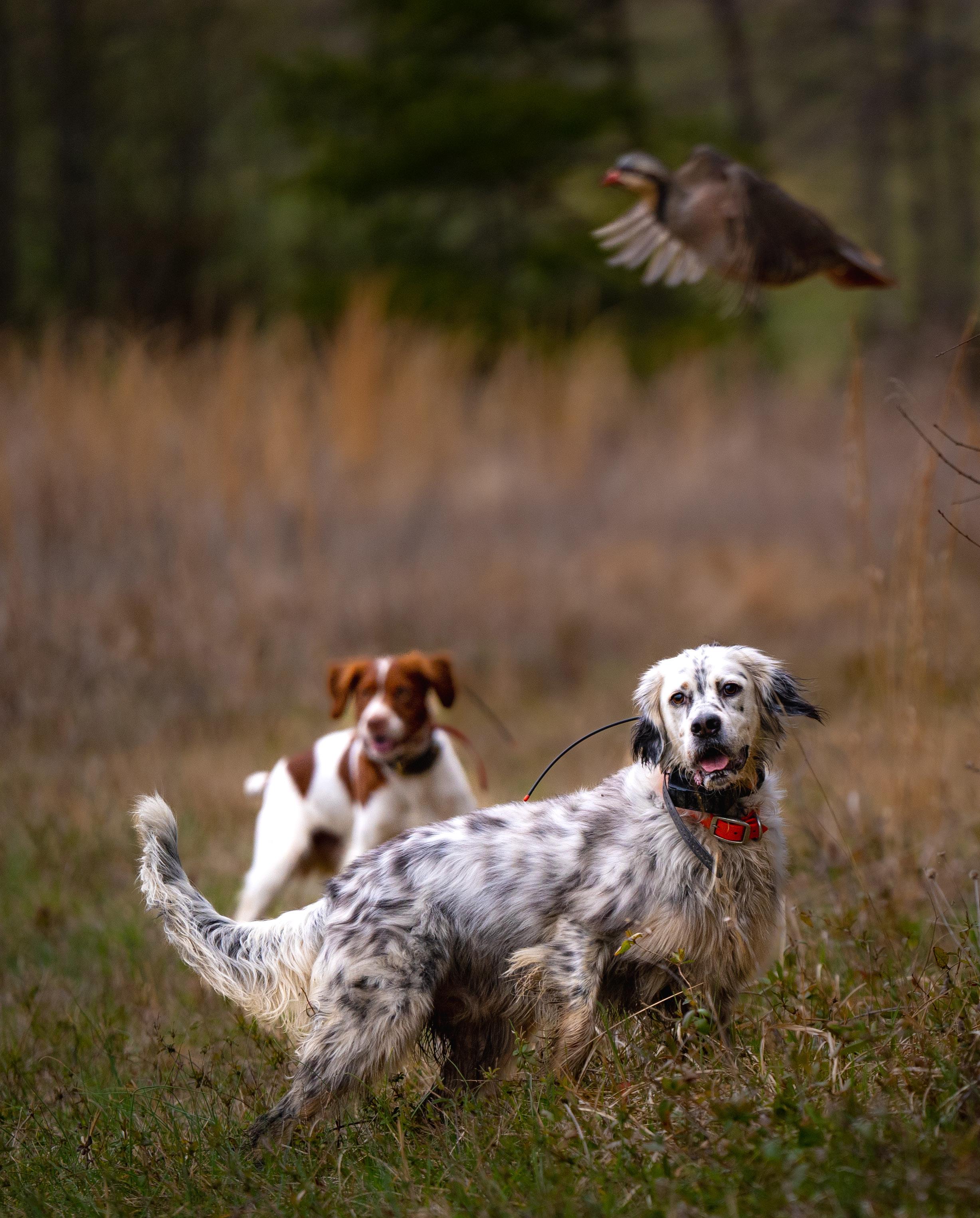
How do you pick the right breed of gun dog that best suits your needs when there are so many breeds to choose from? Asking others for their opinions is a good place to start, but you’ll more than likely encounter staunch loyalty and support for breeds that work best for them.
I used to think it would be easy to find a cookie-cutter description of each breed. But I’ve discovered over the years that there’s a wide variety among litters, and serious dog handlers need to do their due diligence on each litter to find traits they want to see in their kennel.
Individual dogs—even within the same breed—may have different temperaments and personalities. Consider my friend’s two American Brittanys. One is sensitive and requires delicate handling; the dog will shut down for hours if my friend corrects it sternly. His other Britt is much more like my German Shorthaired Pointer (GSP) and is not sensitive. Even though they are from the same breed, the difference between them is drastic.
As an upland bird hunting guide in Maine, I spend a lot of time working with hunters who bring all types of dogs to hunt with us in grouse country, including spinones, wirehairs, shorthairs,
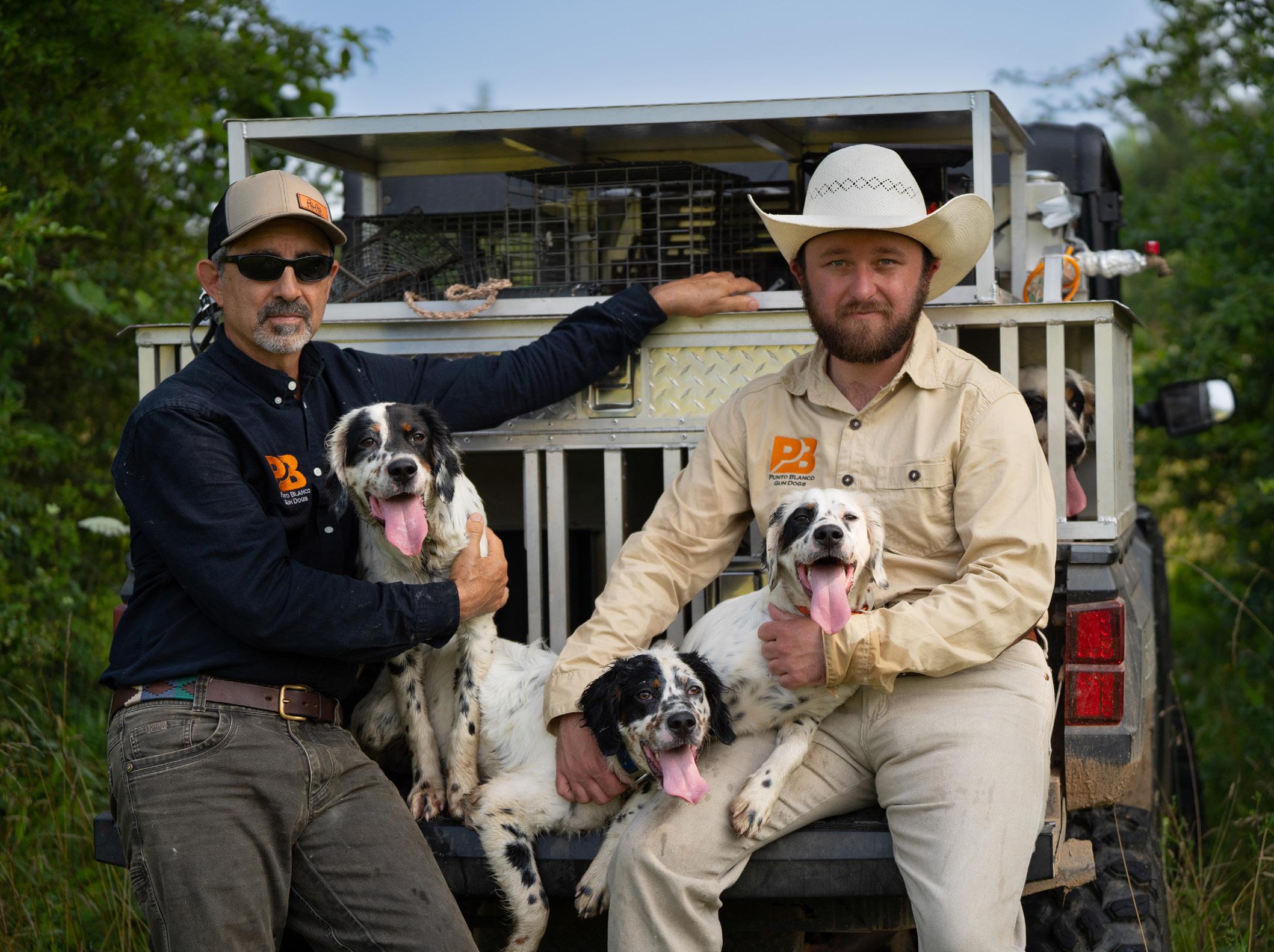
Griffs, vizslas and English pointers. So, after seeing them all hunt, one may ask which breed I would choose to hunt with? My answer: I’d happily put the best dog of each breed in our kennels.
Some breeds produce more champions than others. For instance, Weimaraners and Irish setters have had a lot of their good hunting lines fall to show lines. You’ll have to carefully research good kennels to find quality litters. Shorthairs, on the other hand, seem to be in their genetic prime and make for easier picking, especially for new handlers just getting started.
Remember, the dog must fit your personal situation. A friend may recommend a litter of hard-charging pointers, telling you that they’re absolute bird-hunting machines in the field, and that you cannot go wrong with those genetics. Maybe that’s true for your friend, but it doesn’t mean the dog is perfect for everyone.
So, how do you choose the right dog for you? This isn’t an all-inclusive list, but here’s my top four picks and what I like about each breed.
German Shorthaired Pointer
This breed is my top pick. I got into GSPs because in Maine
they were the most available, and I am now most comfortable training them. I love their intensity, style and goofy personalities. These dogs will outlast most others, and their athleticism is stunning. Sometimes it’s hard to tell the difference in their energy level and technique over the course of a hunt because they tend to stay stable and energetic all day long. I’ve heard people say GSPs wouldn’t make a good house dog because their energy level is too high, and they never settle down. This is a breeding issue. All hunting dogs need space and exercise. My dogs go into chill mode as soon as they’re in the house and switch the energy off. They’re also great with kids. GSPs weigh 45 to 85 pounds.
American Brittany
The American Brittany is our other top pick for Maine Upland’s kennel. The Britts in our kennel have generally proven to be closer-working than our shorthairs, and that makes it a good mix in the field. They’re good looking and family friendly, and you get a full-sized hunting personality in half the size of a shorthair at 30 to 40 pounds.
If grace and style is what you’re after, a good setter is hard to beat. Watching that flag-of-a-tail go up on point is exhilarating. They have sweet personalities and are intelligent pups. Setters generally are close-working dogs in the grouse woods, and if
you’re into tradition, you can’t go wrong with this breed. Similar in size to the Griff and shorthair, they usually weigh 50 to 70 pounds.
Griffon
I’ve hunted behind this breed often. They’re usually low-key with a laid-back point and gentle personality. The Griff is known for its beautiful, harsh coat. The breed does well in our wet, cold late-season hunts because their coat enables them to retain body heat. Like setters, they weigh 50 to 70 pounds, although the ones I’ve seen appear larger because of their long coats.

Listen to good advice, but ultimately you know what you want in a dog. If you’re a new dog handler, select a GSP because the breed is forgiving in training. Do you have two young kids at home and need a smaller dog? Go for the Brittany. Do you hunt in cold climates? Consider a Griff or wirehair because of their coats. If you’re a hardcore duck hunter who sidelines in the uplands, maybe your best bet is a well-bred lab and training it to flush upland birds.
I recommend any new uplander looking for a good upland dog attend a training clinic hosted by your local North American Versatile Hunting Dog Association (NAVHDA) chapter. NAVHDA members hunt their dogs and don’t just go to field
 GERMAN SHORTHAIRED POINTERS ARE A POPULAR CHOICE WITH UPLAND HUNTERS EVERYWHERE.
GERMAN SHORTHAIRED POINTERS ARE A POPULAR CHOICE WITH UPLAND HUNTERS EVERYWHERE.

DUTCH, A WIREHAIRED POINTING GRIFFON, IS AN EXCELLENT HUNTING DOG AND COMPANION.
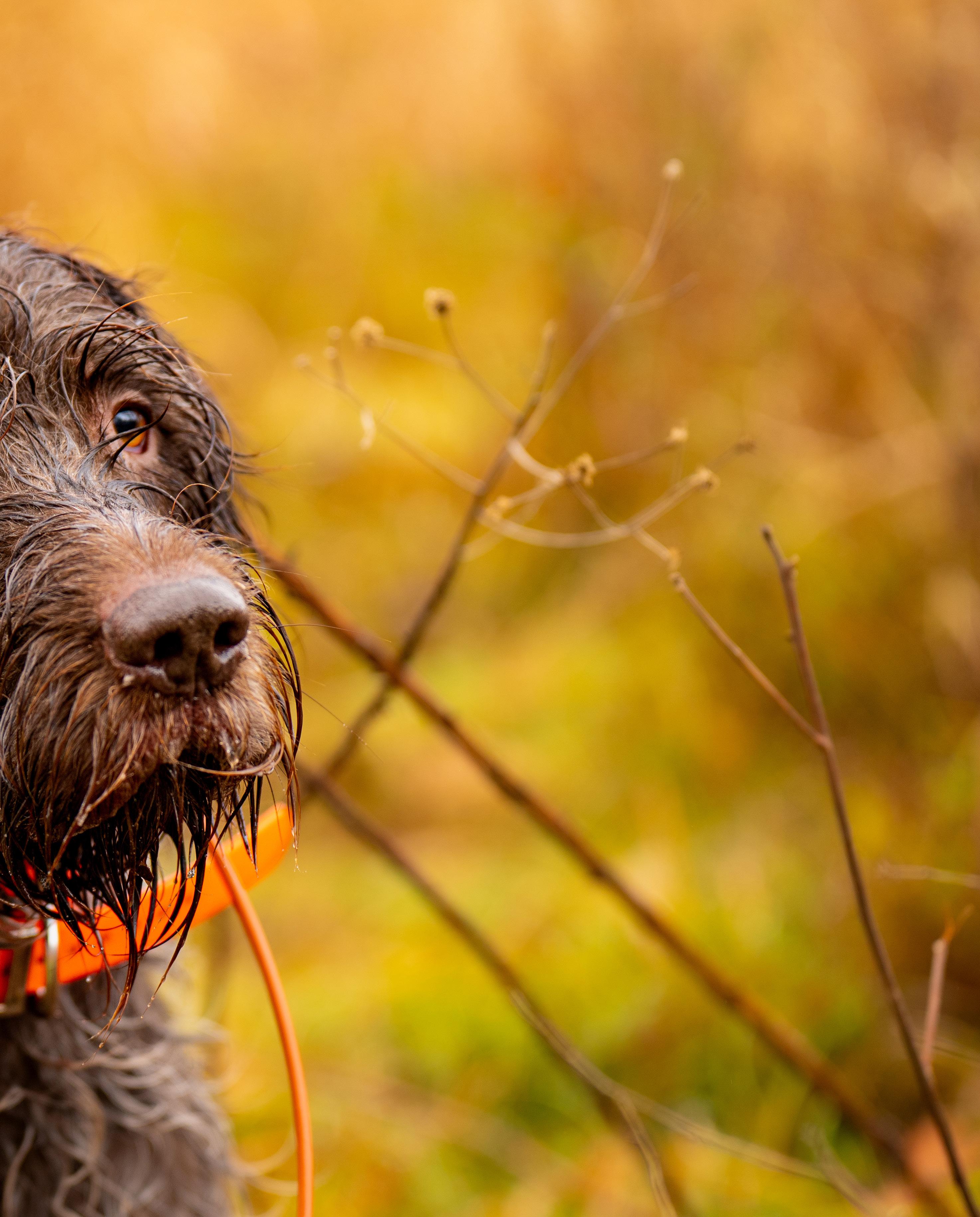

trials. Chapters nationwide hold clinics most weekends April through September, and by visiting one, you’ll find a group of friendly, knowledgeable hunters who’ll be happy to show you their dogs. Best of all, you’ll be able to see all the breeds at work in the field. You’ll notice how different breeds range in energy level and hunting style. You’ll observe the temperaments of sires and dams. Members can also recommend reputable breeders and upcoming litters, and they’ll probably let you walk along on training runs so you get a first-hand view of their dogs' skills.
Once you’ve selected a breed and a potential litter, visit breeders. Ask questions and get a feel for the type of temperament they’re going for, and make sure they’re hunting their dogs. Good breeders aren’t breeding dogs that just happen to be in their kennels; they’re looking for good genetics to complement the ones they already have. Cooperation and desire are paramount in their breeding programs. You can request pedigrees and testing results from NAVHDA to see how the parents and grandparents of dogs performed. Hunting dogs are born, not made. The traits you’ll need for hunting are already in the genes.
Well-bred dogs can be expensive. An average bird dog may cost $1,000 to $3,000, but don’t let that deter you. Money will be the least of your concerns over the life of the dog. The price is well worth the cooperation, hunting skills and overall health of the dog.

When you finally get that long-awaited pup, seek advice at NAVHDA clinics. Take advantage of the wealth of information and tips experienced handlers offer. Consider hiring a good trainer for one-on-one work. Commit 15 minutes a day to training your dog on what you’ve learned and be patient. Many expert dog trainers will tell you that the handler is more of a problem than the dog most of the time. These breeds are smart, and you’ll see progress quickly.
Above all, take advantage of the season and get your dog out into the woods. Bird contact is so important, and being in the field with your dog is fun. It’s easy to get anxious about training and progress, but when the first bird season comes and your new hunting partner points hard at a thick spot in the brush, it’ll all be worth it. Good luck in the covers.
Michael Tuminaro is a Registered Maine Guide who has been hunting and fishing in the United States and Canada for more than 30 years and training bird dogs for more than 10 years. He is the deputy executive director of the Maine Professional Guides Association and has served as VP of the Sebasticook NAVHDA (North American Versatile Hunting Dog Association), taking part in prize-winning dog work. Tuminaro has written for NAVHDA’s Versatile Hunting Dog, The Maine Sportsman and The Virginia Sportsman. He continues to author articles about gunning, bird dogs and the uplands.

 STORY BY JOE SHIELDS
STORY BY JOE SHIELDS
PHOTOS COURTESY OF
“Make your lives a masterpiece, you only get one canvas.”
– E.A. BucchianeriALBERTO REY REY WORKS IN THE STUDIO ON HIS “AESTHETICS OF DEATH SERIES.” THE PAINTING IS IN THE COLLECTION OF THE BURCHFIELD PENNEY ART CENTER, BUFFALO, N.Y.
When getting ready to interview a subject, I find preparation is key. Always have your first question ready. Here’s a recent example.
“So, you retired from academia after a 33-year career as a distinguished professor of fine arts. You’re a prolific and successful artist, published author and content producer. You paint in your barn and exhibit your work globally in renowned galleries and museums. You’re a conservationist who founded and directs a youth fly fishing program. And you’re an Orvisendorsed guide who takes clients fly fishing for steelhead on a stream behind your home in Upstate New York. How did I miss this life plan, and where do I sign up?”

Alberto Rey chuckled. “I’ve been fortunate,” he said humbly.
Rey was born in Havana, Cuba, in 1960. He received his political asylum through Mexico in 1963 and moved to
Miami, Fla., in 1965. Two years later, his family relocated to Barnesboro, Pa., where he first discovered his passion for painting and drawing.
“I grew up in a small coal-mining town of 2,000 people,” said Rey. “There was no art scene there, but I was interested in it and began painting and drawing by copying album covers and MAD Magazine cartoons. In high school, I progressed by duplicating paintings in history books. At no point did I ever imagine I could make a living as an artist.”
West Point recruited Rey to play football. He was there for a short time before he transferred to Indiana University of Pennsylvania (IUP). On a whim, he decided to take an art class, and his professor encouraged him to stay with the arts. Soon afterwards, he was offered a teaching assistantship and attended the Art Institute of Pittsburgh while at IUP. Rey focused his studies on painting and illustration during his junior year.
“That was the big shift for me,” Rey explained. “I’ve always been a science geek and at one point entertained the idea of being an oceanographer. My time at IUP led me to refocus my educational and professional pursuits from biology to art.”
In 1982, Rey earned his B.F.A. from IUP, an institution that would honor him with a distinguished alumni award in 2008. After graduation, he lived in Boston and then headed to Miami to work on Christo’s Surrounded Islands Project. Considered one of the greatest environment-art projects ever made, the installation involved surrounding 11 islands in Biscayne Bay with floating pink woven polypropylene fabric. The idea behind the work was underlining the elements and ways in which the people of Miami live between land and water. Next, he moved to Hollywood, Fla., where he worked at Joan of Arts Studio as an artist creating large fine art etched glass panels for private
homes, cruise boats and shopping malls.
Rey continued his education at the University at Buffalo, and in 1987, he received his M.F.A. in drawing and painting. After graduating, he traveled throughout Spain, Italy, Morocco and Mexico. The following year while teaching at LincolnSudbury High School, The Art Institute of Boston, New England School of Art and Design and the Museum of Fine Arts, he enrolled in courses at Harvard University in contemporary art and environmental studies. That same year, he had his first solo exhibition in New York City at the Museum of Contemporary Hispanic Art (MoCHA) and was selected into the permanent collection of El Museo del Barrio in New York City.
In 1989, he moved to Dunkirk, N.Y., to accept a teaching position at the State University of New York (SUNY) at Fredonia and married Janeil Strong. In 1992, his works were selected


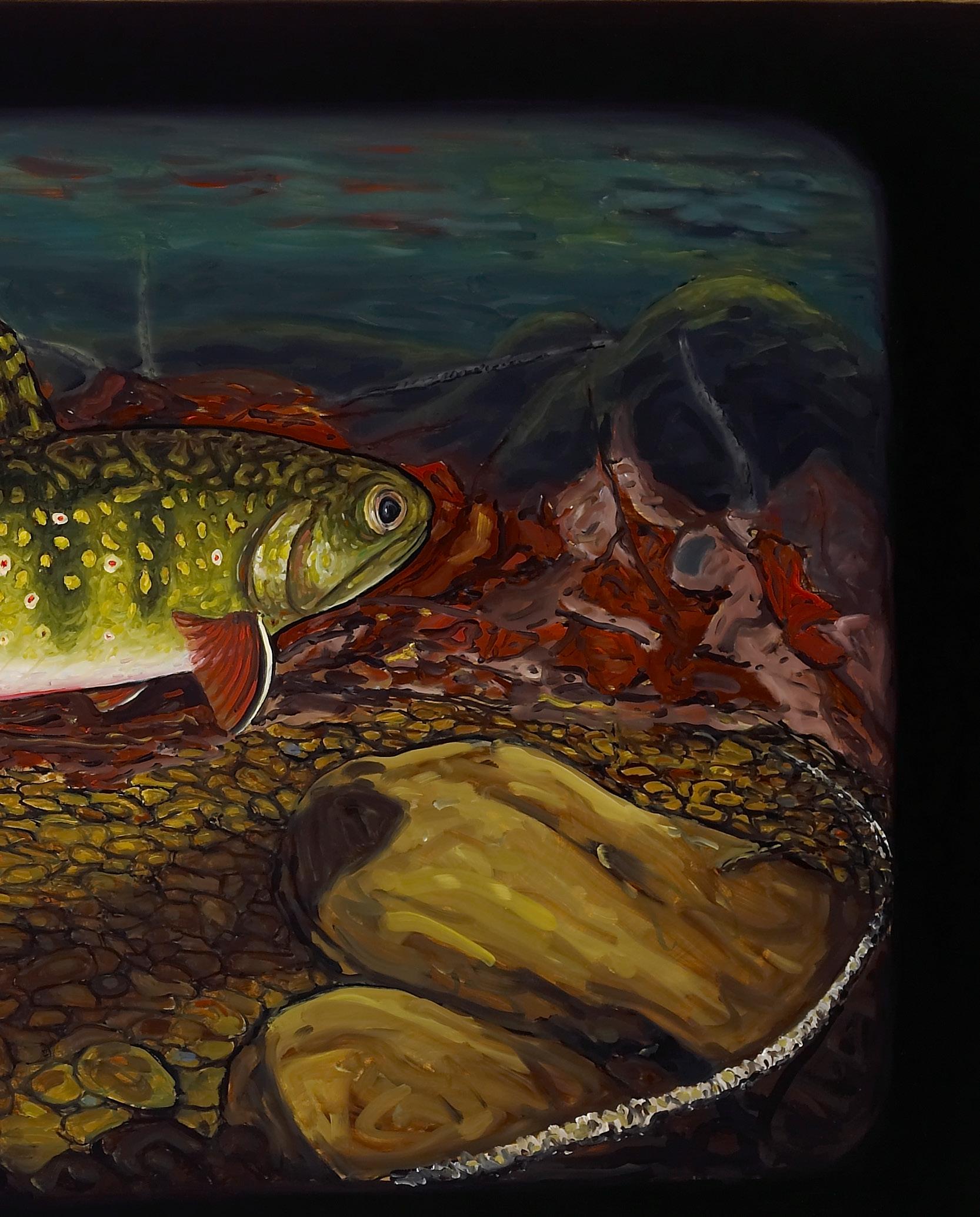
"BIOLOGICAL REGIONALISM: BROOK TROUT, BIG MARY'S CREEK, VESUVIUS, VA.”
into the permanent collections of the Albright-Knox Museum, Brooklyn Museum of Art and Bronx Museum of Art. In 1994, Rey received the Hagan Young Scholar/Artist Award for distinguished research and creative activity as a junior faculty and the Minority Visiting Scholars Award from Central Missouri State University.
In 1996, while at SUNY Fredonia, Rey accepted a position as director/curator at the Chautauqua Center of the Visual Arts at Chautauqua Institution. Soon afterwards, he was appointed to the New York State Council on the Arts and to the Artist’s Advisory Panel of the New York Foundation for the Arts. Three years later, Rey received the Kasling Lecturer Award for distinguished research and creative activity as a senior faculty member. In 2003, he received the Chancellor’s Award for Excellence in Scholarship and Creative Activity. In 2007, the State University of New York’s Board of Trustees promoted Professor Alberto Rey to SUNY Distinguished Professor for Research and Creative Activity, the state university’s highest rank.
“I began fly fishing after my academic and professional career was on track and while I was on sabbatical from SUNY,” he said. “There was a sporting goods store in town, and people were
talking about salmon running up rivers near Lake Erie. In the fall I tried it with a neighbor who was a fly-fishing addict, and then I became an addict too.”
Rey inexpensively outfitted himself at Cabela’s and went so far as to attach AstroTurf to the bottom of his sneakers so he could wade into rivers. He had the basics without buying too much, starting simple and fishing every day. He began tying flies, which appealed to his artistic talents. Then the educator in him came up with an idea.
“There was a large population of minority and lower-income children in our area, and I believed fly fishing would be a great way to get kids out of the city and into the outdoors.”
In 1998, Rey attended Sportfishing and Aquatic Resource Educational Programming (S.A.R.E.P.) through the Cornell Cooperative. The seminars provided training for instructors who would provide educational conservation experiences to children. He then founded and began directing the S.A.R.E.P. Youth Fly Fishing Program with a grant. In 2016, S.A.R.E.P. Youth Fly Fishing Program’s name was changed to Children in the Stream/4H Program.
“Children in the Stream is an educational program that
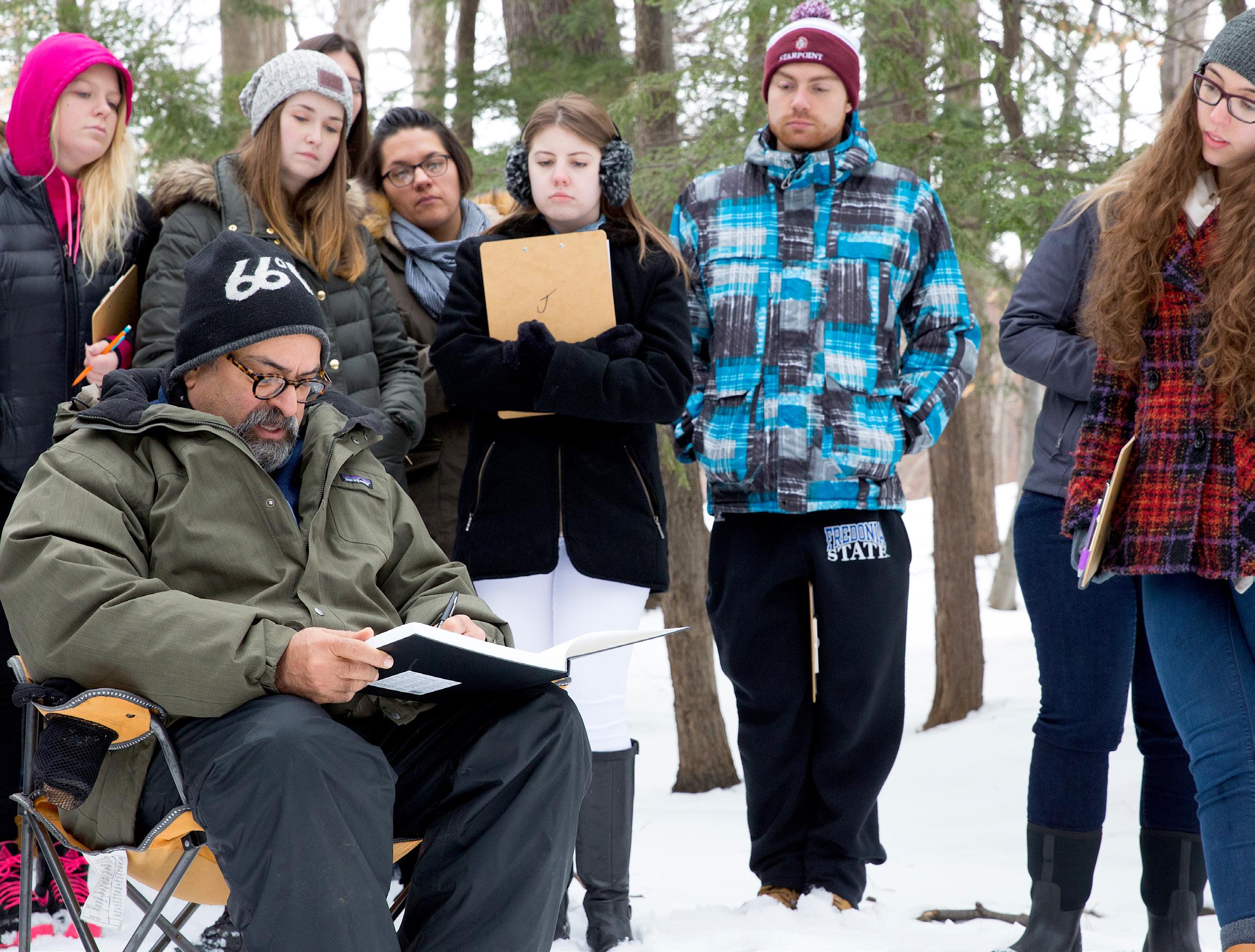
provides youth with information and experiences related to aquatic resources, conservation, ethics and fly fishing. Our goal is to protect fish and the land for future generations. And the kids don’t have to think about money. Thanks to Orvis, Patagonia, Rich Family Foundation and private donors, we provide all the equipment, materials and classes for free so that students can participate without worrying if they can afford to participate. I plan on directing the program until I die. We have a lot of fun, and it makes me happy.”
Rey’s artwork has been influenced by his Cuban lineage and his attempt to find a sense of identity in a complex contemporary environment. His abstract work from 1982 through 1992 dealt with issues related to layered memories of Cuban iconography and his American experiences. After 1992, his drawings and paintings incorporated realistic imagery to make clear connections between his past concerns and art history, regionalism and his bi-cultural interests. In the field, he sketches with pen and ink and paints in watercolor. In the studio, he paints in oil and works with ceramics.
Since his relocation to western New York in 1989, Rey has also performed extensive research on local entomology and on the migratory and biological sensibilities of the regional steelhead. In 2000, his reflections on contemporary society started to incorporate environmental issues, perspectives in contemporary art theory and art history, biology and society’s disconnections with nature.
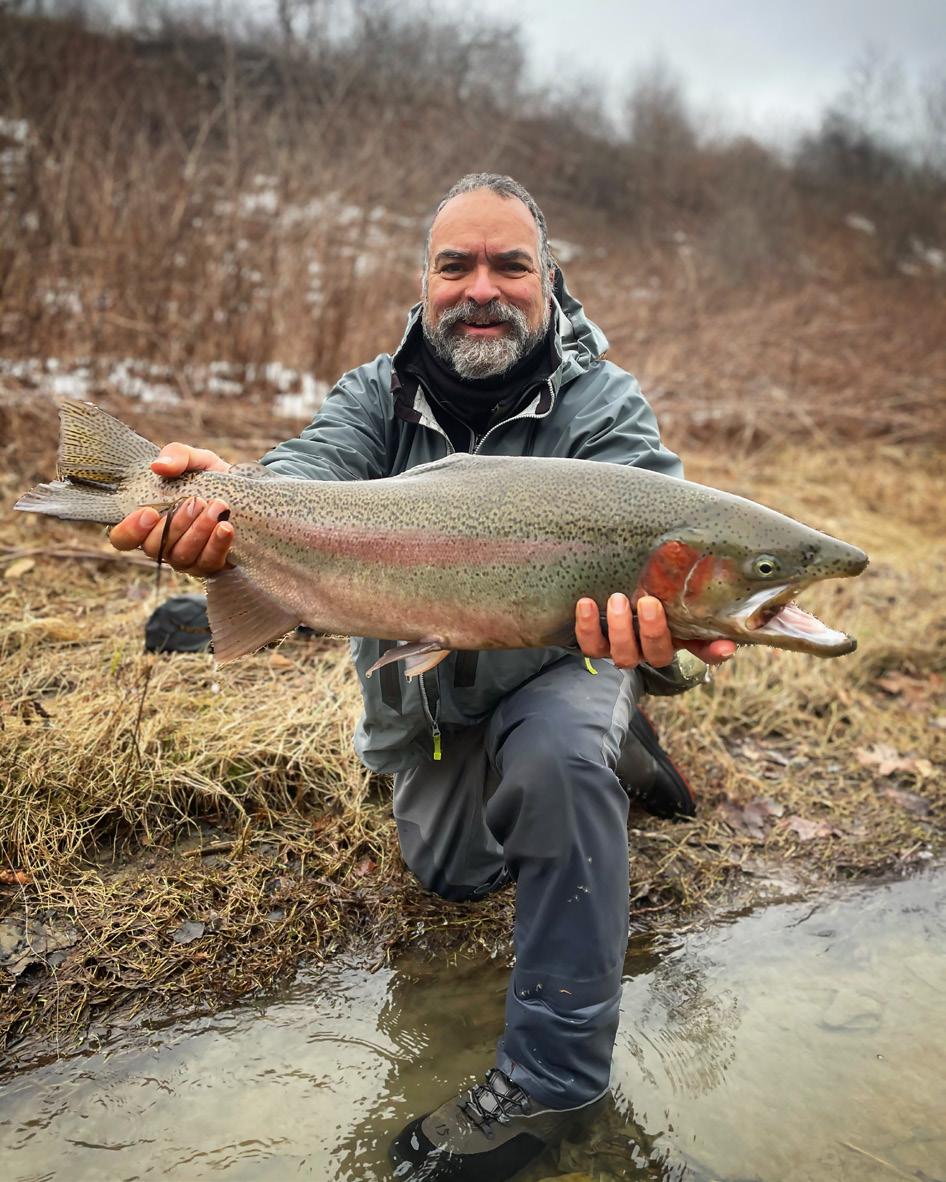
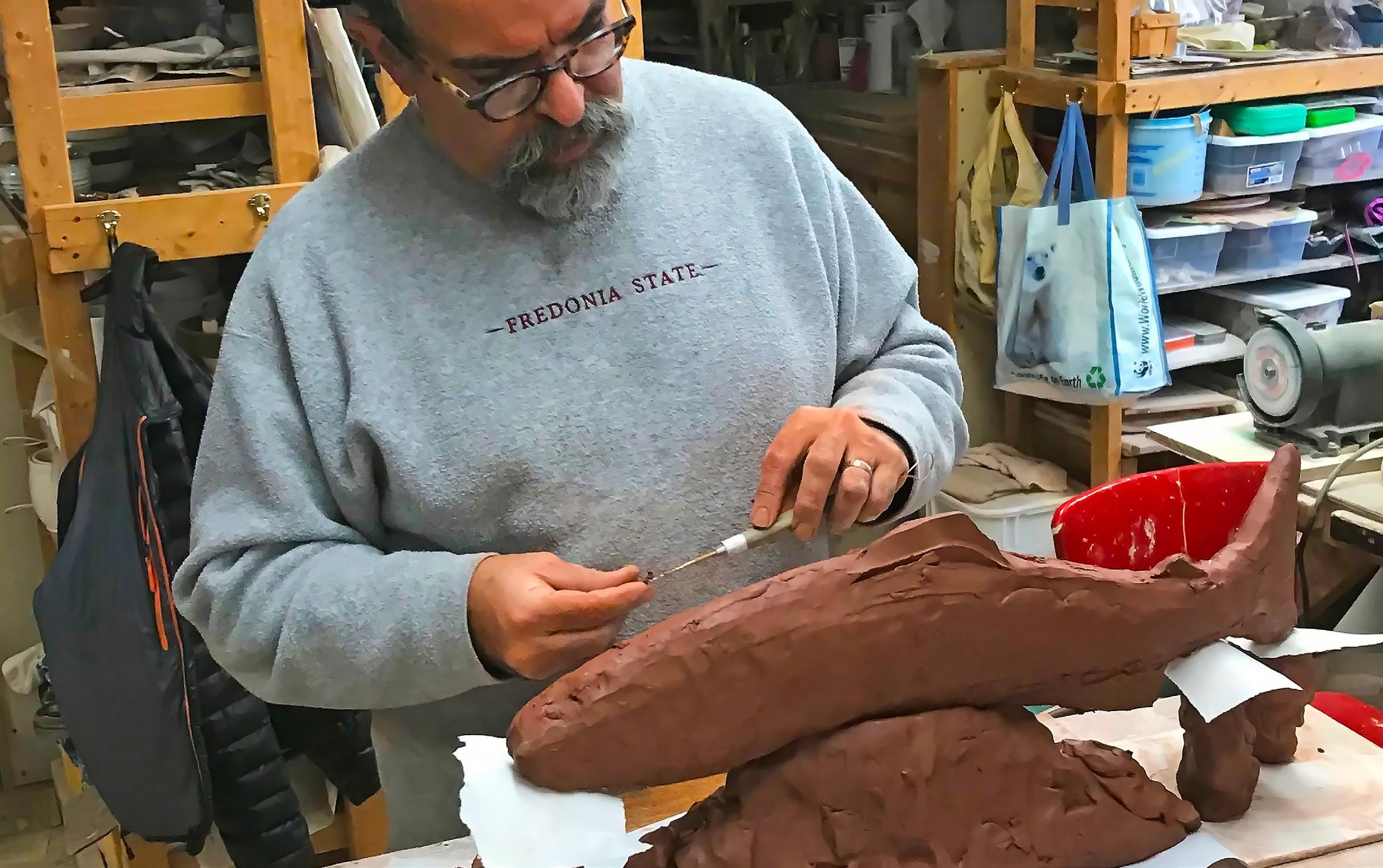
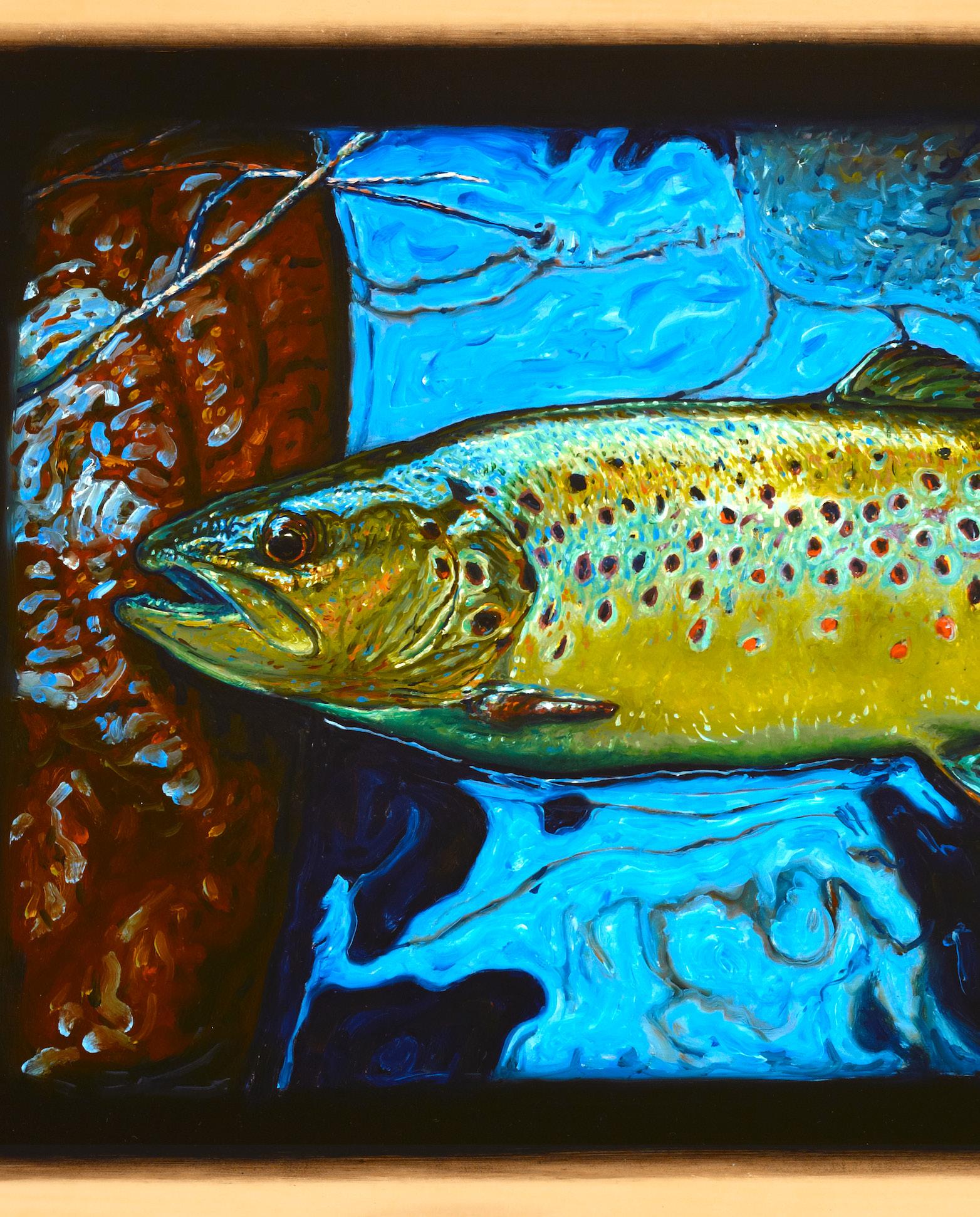
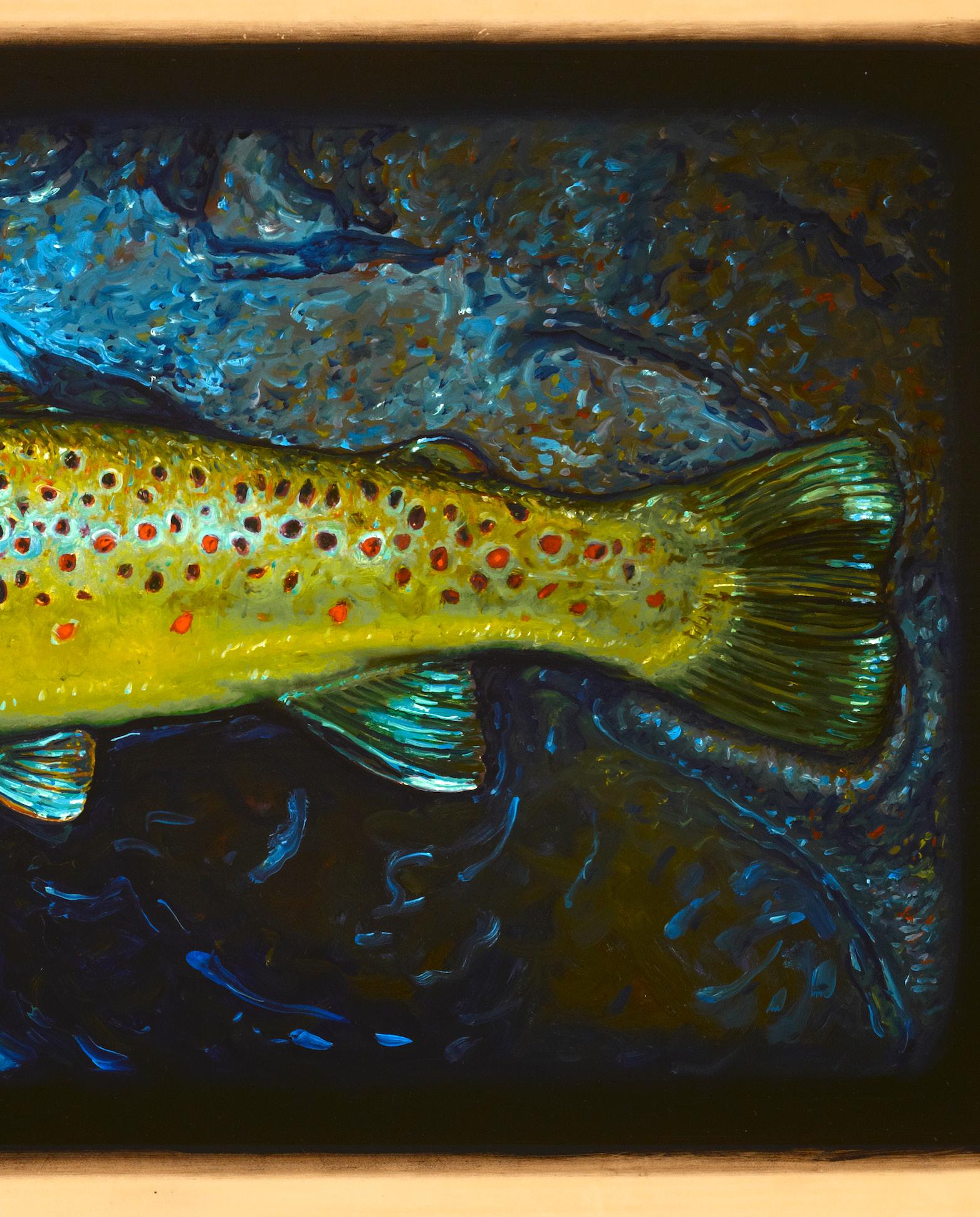
Today his paintings are found in more than 20 museum collections and have been in over 200 exhibitions. His films and videos have been screened internationally, and his illustrated articles and artwork have graced the covers and pages of Gray’s Sporting Journal, Art of Angling Journal, Fish and Fly Magazine, American Angler, The Drake, Saltwater Fisherman, Angler’s Journal, Fly Fishing International Magazine, Hallowed Waters Journal and Buffalo Spree, where he is a visual arts writer.
In 2014, the first book outlining Rey’s work, “Life Streams – Alberto Rey’s Cuban and American Art,” was published by SUNY Press in conjunction with his solo museum exhibition at the Burchfield-Penney Art Center in Buffalo. The exhibition concentrated on his Biological Regionalism Series that investigated the long history of the Scajaquada Creek and when its condition became so polluted that it was buried under the city of Buffalo. The project also looks at its present condition and the challenges that face the river and community. Rey has written and illustrated numerous books. He has also combined his research with his interest in sharing the spirituality of fly fishing to become an Orvis-Endorsed FlyFishing Guide. He was the international finalist for the 2020

Orvis Freshwater Guide of the Year Award and the international winner of the 2021 Orvis Guide of the Year.
“In February, my wife and I are going to travel around the world for six months,” he said. “We are going to fly fish, scout locations and check out outfitters and lodges so I can host trips in the future.”
Towards the end of our interview, Rey invited me to join him on a guided steelhead trip in the Fredonia area. I’d be a fool not to go. You can learn a lot from spending time with an artist. It’s just difficult to paint Rey with that one brush. Visit albertorey.com for more information about his art, guided fly fishing and conservation work.
Joe Shields is the editor in chief of The Virginia Sportsman He is a writer and communications executive based in Charlottesville, Va. His writing and photography have appeared in The Virginia Sportsman and other publications. He is also an award-winning, gallery-represented artist whose work is found in private collections and galleries. Whether fly fishing or surfing, drawing or painting, he celebrates sporting life and culture in his narratives and art.

July 13 - September 9
• Racing every Thursday, Friday & Saturday at 1:30 PM
• 20th running of the New Kent County Virginia Derby Saturday, September 9
(details at colonialdowns.com)
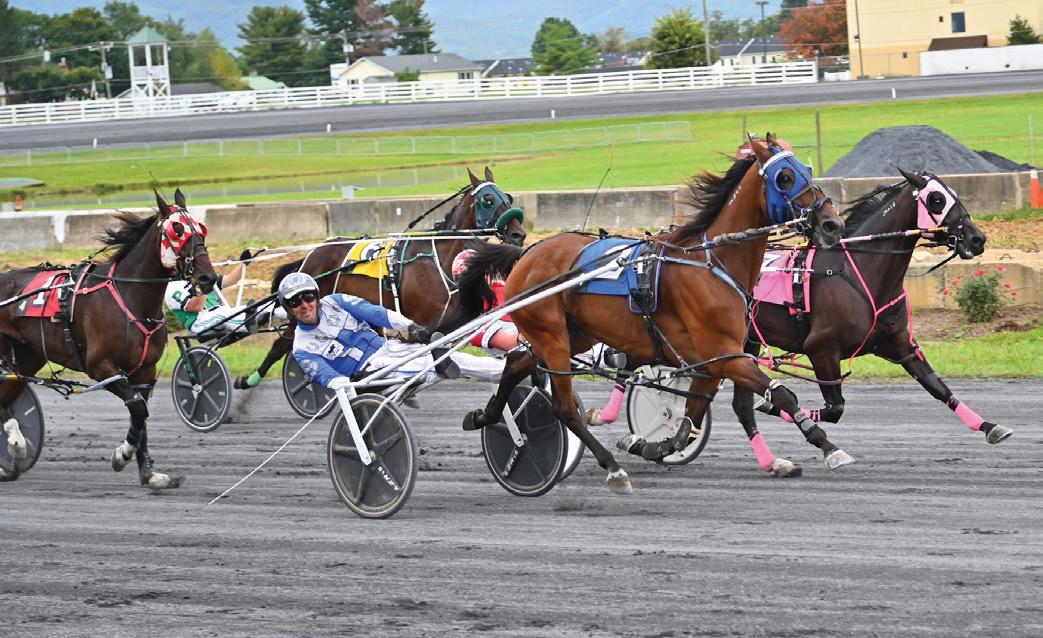
September 16 - October 29
• Racing every Saturday & Sunday at 1:00 PM
• FREE Parking, FREE admission
• Check out the popular “Own a Horse for a Day” promotion
(details at shenandoahdowns.com)
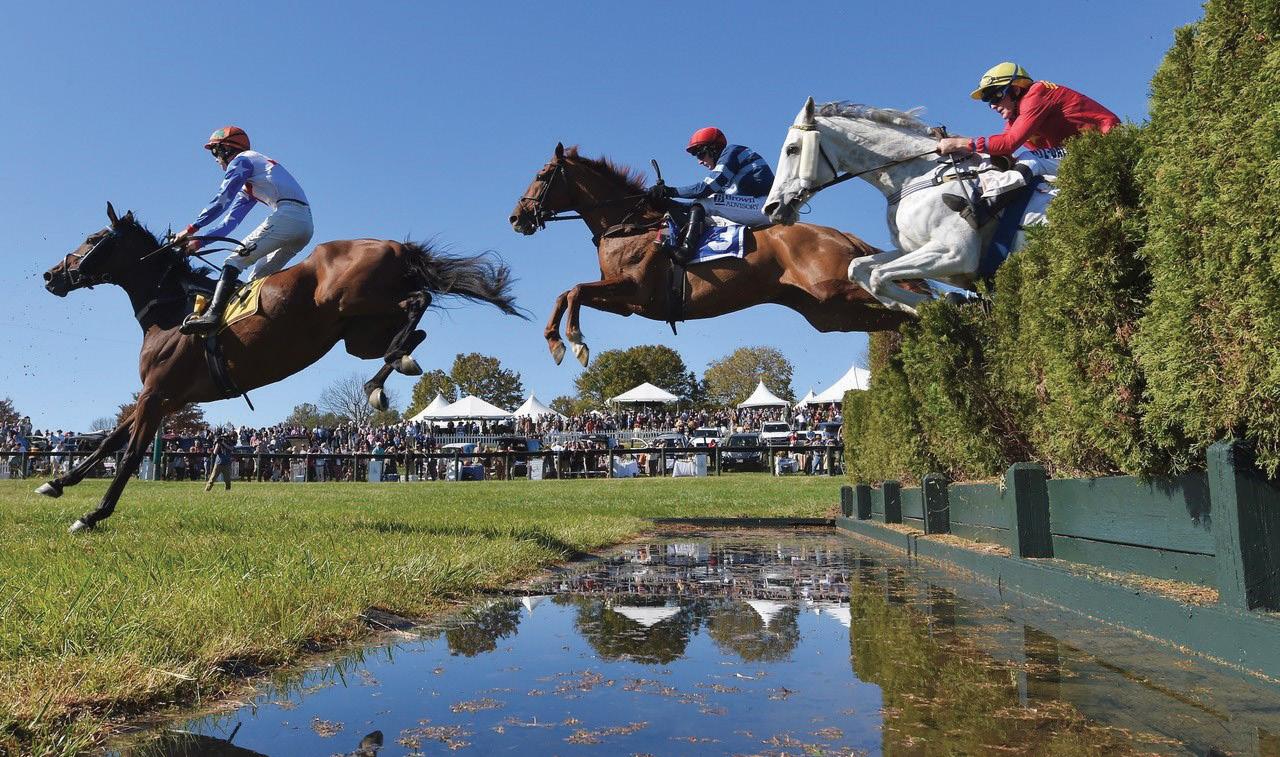
Oct. 1: Foxfield Fall Races in Charlottesville
Oct. 14: Virginia Fall Races in Middleburg

Oct. 28: International Gold Cup Races in The Plains
Nov. 4: Montpelier Hunt Races
(details at nationalsteeplechase.com)
virginiahorseracing.com
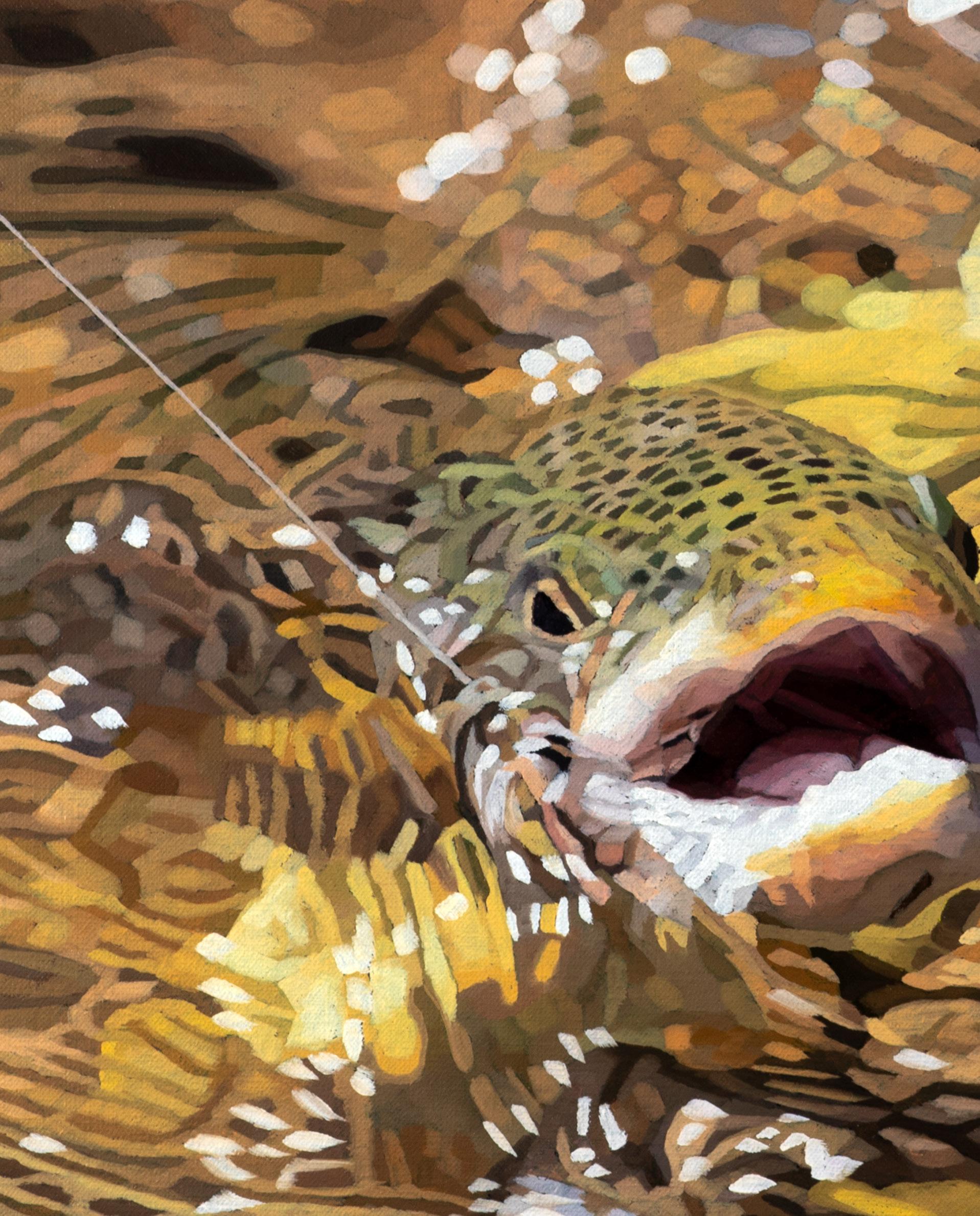

The afternoon didn’t get off to a great start. There were the extra phone calls I had to make before sneaking out of the office. Then I had to rush to pack fly rods, flies and other necessities for a quick trip to fish the South River in Greene County, Va. And finally, there was the single-lane bridge under construction that my GPS failed to account for, and while I measured the resulting delay in minutes, it felt like hours to me.
Fortunately, my earlier aggravation subsided as I turned off the gravel road and meandered down the lane that led to the stream. Driving past native grasses and newly planted fields, all green and alive from the prior night’s rain and warm spring temperatures, further soothed my restless mind even though I couldn’t help but tick through an inventory of my hastily packed gear.
I arrived at the parking area—a small patch of mowed grass alongside the mile-and-a-half section of the South River that is accessible to anglers and stocked with large rainbow trout. It was my first time on this strip of private water, which is managed by our local fly shop and open to members who pay to access five different rivers scattered throughout the region. My friend

Rob Staunton had recently invited me to fish another property managed by the fly shop on Buffalo Creek in rural Rockbridge County, and I was so impressed with the experience that I decided to join the collective.
Now in my second decade as a fly fisherman, I’m selective in how I spend my time on the water. My early years were marked with trips in which I reveled in the pure joy of casting a fly rod. I loved false casting from the bow of a flats boat as much as I embraced the challenge of delicately placing a size 12 dry fly under the treacherous reaches of a snaggy Rhododendron branch on a North Carolina stream. The idea that catching fish was secondary to the delight of just being out on the water has given way to my expectations that fishing trips should result in caught fish.
Trout fishing in the Commonwealth can be a mixed bag. Our state fish is the brook trout, which are native and inhabit many of the streams throughout the Shenandoah Valley and Blue Ridge Mountains. Recreational trout fishing here is mostly dependent on regular stockings, and brown and rainbow trout are the most supplied fish. Warmer summer weather and resulting low


water levels generally mean very few of these stocked fish survive from season to season. For most managed waters, fishing usually wraps up by the end of May or early in June depending on rainfall and temperatures.

A recent cold front and a wet spring gave me hope that the South River was going to have enough water to keep the larger trout holed up in the deeper pools where the water was cooler and the food more plentiful. As I walked to the riverbank, I couldn’t help but notice the heat that seemed to radiate up through my wading boots and into the closed confines of my waders. A more prepared angler would have checked the weather and decided fishing without waders would be a more sensible plan.
My excitement began to build as I approached the river, and I was confident today was a good day to fish. In recent years, fishing has played a less prominent role in my life. For me, family, work and my new love of upland hunting have all resulted in less time on the water. Despite these realities, my love for fly fishing is strong.
The riverbank was overgrown but passable, and the trees provided refuge from the afternoon sun. I stepped into the stream and my heart sank a bit when the water barely reached my knees, and I knew it wouldn’t hold fish. Today I would have to find the pools
and fish them hard.
Undeterred, I released my fly and began to work areas I believed may be productive. As I methodically fished in front of me and waded downstream, I remembered that fly fishing is an optimistic pursuit. Anyone who has cast a fly rod knows there’s always hope; your next cast may hook a hungry fish—or you may find the perfect pool around the next bend. I thought about these ideas as I reached the final bend in the river.
To access the last stretch of fishable water, I had to cross the river and walk along the fields that shouldered the other side. I stepped on the rock-strewn riverbed and was aware of storm clouds developing in the distance, a byproduct of the heat and humidity of a late spring day.
I didn’t want to get caught in a thunderstorm and decided to take a quick look and a few casts were all I had time for before returning to my vehicle. Disappointed by the lack of action on the river, I neared the final hole somewhat discouraged by the day’s outcome.
I approached with the sound of distant thunder in my ears, determined to make one last cast. The stream coursed through an oxbow bend, and large exposed bedrock at the far end slowed the flow and held water. I could tell the water was deep and cool, an ideal spot for trout on a warm afternoon. The lower water levels I encountered earlier in my journey had drawn fish here, and the white foam line following the

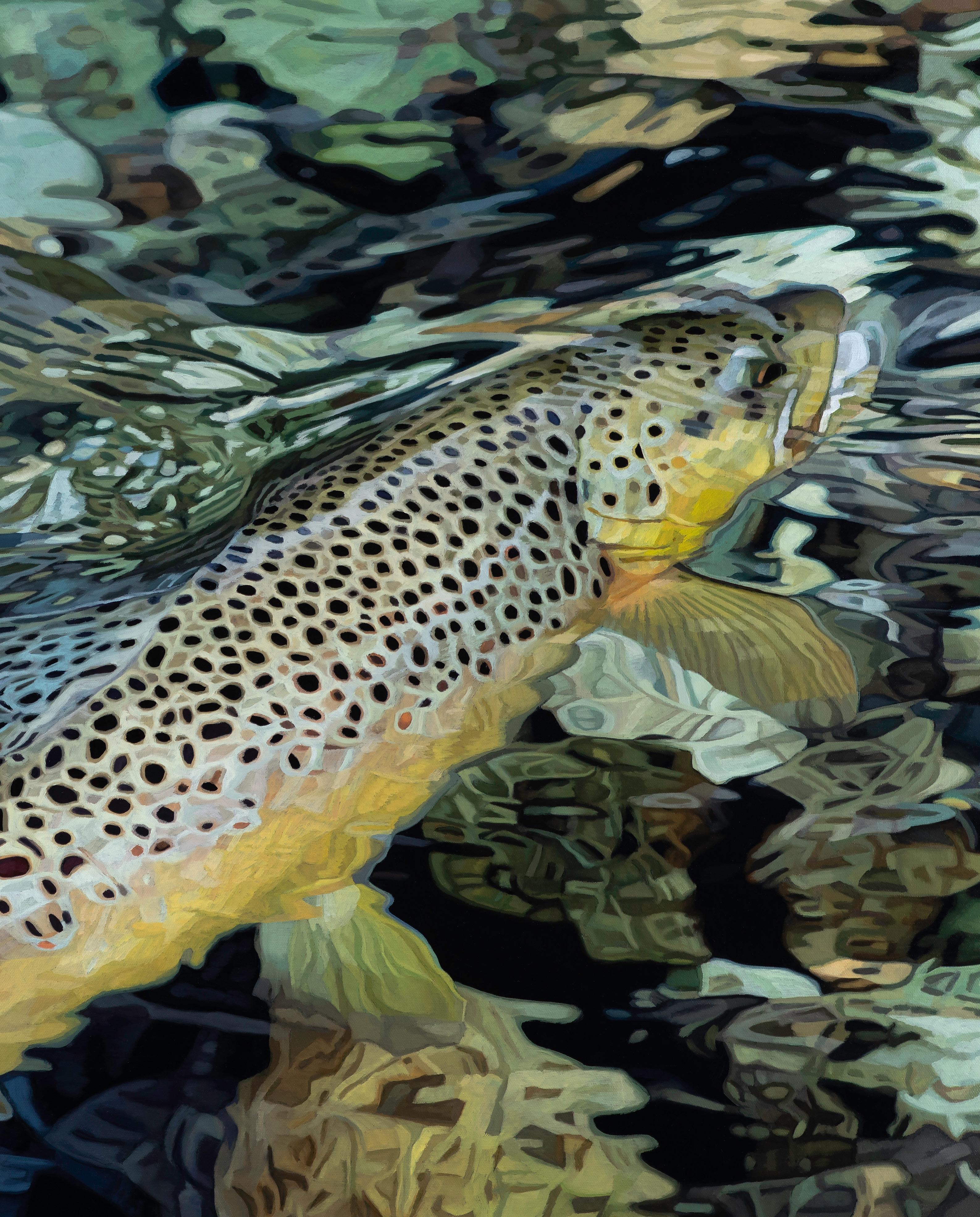

river’s current into the pool was a clear indication that these fish were able to find the nutrition they needed to survive.
Within moments of my first cast, I landed a beautiful trout, nearly as large as the 24-inch opening in the mouth of my net, a worthy opponent for my slight 4-weight rod. The darkening skies and the audible rumbling served as a reminder that my time on this pool was short. A few more casts yielded a second large trout on a blue-winged olive that mimicked the afternoon hatch that attracted fish to the surface. I became more excited with each cast—and felt an urge for haste as the storm became more real.
Rain fell and I retrieved my line. I marveled at trout that continued to swim beneath the surface. They did not care about the storm and remained active as I studied them through my polarized lenses. Then I heard the crack of thunder overhead, and I retreated to the safety of my car. There were so many fish in that pool, but it was time to go.

For more information on the Albemarle Angler’s private fly-fishing club, Sachems Pass, contact Will Leggett at sachemspass@gmail.com.
A.D. Maddox is a world-renowned artist who lives and displays her work at her gallery in Livingston, Mont. Maddox’s oil paintings demonstrate her talent for photographic realism as well as abstract interpretations of the waters and backgrounds in her work. Constantly evolving, her art has been featured on the covers of more than 40 magazines, including Gray’s Sporting Journal, The Cormac McCarthy Journal and The Virginia Sportsman. More information about the artist and her work can be found at admaddox.com.
Eric Kallen is the editor-at-large of The Virginia Sportsman. His work has also appeared in The Pointing Dog Journal, The Retrieving Dog Journal and Medium Format magazine, which showcases exceptionally inspiring photography.
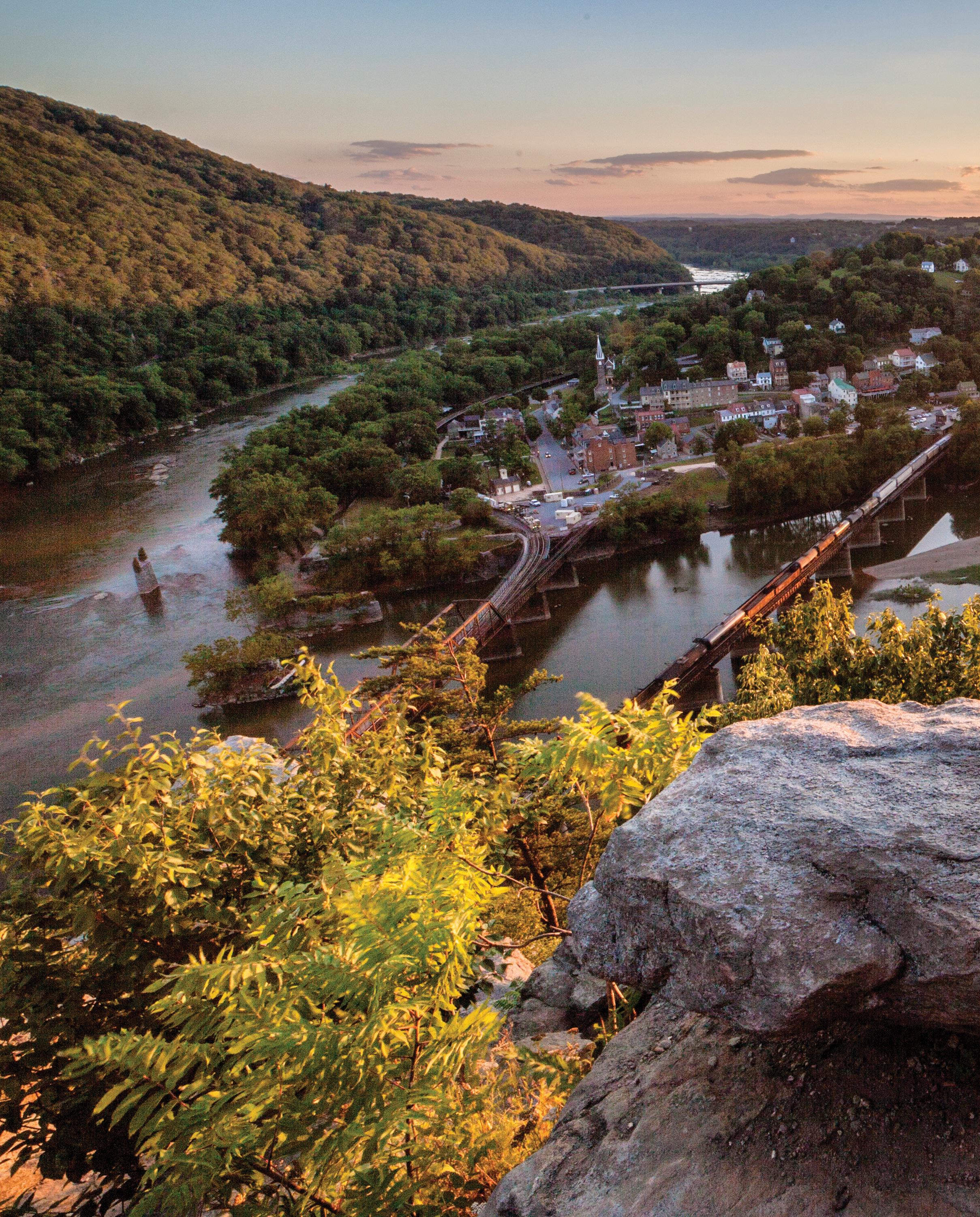 STORY BY JOHN KELLY PHOTOS COURTESY OF AMERICAN BATTLEFIELD TRUST
STORY BY JOHN KELLY PHOTOS COURTESY OF AMERICAN BATTLEFIELD TRUST
Some people take decades, or even a lifetime, to determine their life’s path. Dennis Frye never had that issue. The now-retired park ranger and chief historian at Harpers Ferry National Park (not to mention noted author, lecturer, and Civil War battlefield conservationist) decided the ranger life would be his when he was in sixth grade. The choice may have been predestined by some of his earliest memories of waking up and looking out his childhood bedroom window at the sun rising over the South Mountain Battlefield, where General Robert E. Lee’s Confederates attempted to stall an unexpected Union pursuit during the first invasion of the North.
“By sixth grade becoming a park ranger was my mission,” Frye said. “I wasn’t going to do anything else, and I knew it.”
He began volunteering at three different national parks in 1973, and after graduating from nearby Shepherd College (now Shepherd University), he became a full-time ranger working in Harpers Ferry National Park—at the time the only national park in West Virginia. It’s a rare thing for a ranger to start a career in their
home park, but a rarer thing still to spend a whole career there (save for a ten-year period during which he worked tirelessly, and successfully, on battlefield preservation).
Whereas it’s not uncommon for rangers to work in a dozen parks during their careers, Frye was just too good at his job. He earned promotion after promotion, keeping him in the place that fills his heart and soul and helping him earn a critical role in highlighting the importance of Harpers Ferry in the context of Civil War history while elevating it as a leading tourism destination in the Mid-Atlantic.
Throughout his career, Frye delighted in nothing more than donning his ranger uniform and sharing the rich and multifaceted layers of history that occurred on the ground on which he stood, and for which he fought so tirelessly.
“When I came to Harpers Ferry,” he said, “very little of the battlefield areas were included in the National Park. For example, none of the Confederate lines were within the park. And the Battle of Harpers Ferry was the biggest Civil War battle in what is
today West Virginia. Now all the key positions, both Union and Confederate, are within the park. That was a 25-year effort to make that happen.”
Now seen as a model of battlefield preservation, the battle for the Harpers Ferry battlefield faced down long odds. The efforts of Frye and his colleagues came against a backdrop of massive growth in Jefferson County, a coveted commuter hub for District of Columbia, Maryland and Northern Virginia commuters that for several decades was the fastest-growing county in the state and saw its population nearly triple in size.
“We saved the battlefield,” Frye said. “Instead of having highrise apartments and duplexes, we’ve got dirt and grass and fence posts and hallowed ground preserved. For my wife and me, every time we save a battlefield, that was like having a child, so the preservation of that land is the best legacy I could ever have. As long as there is a national park, that land will be protected.”
Frye’s focus on Harpers Ferry goes far beyond real estate. He has long championed a formerly underappreciated legacy that once began and ended with the name John Brown.
“There’s no doubt that John Brown is the most famous singular
event in the history of Harpers Ferry,” he said, “but I like to tell people that the Civil War included nearly 1,400 days of terror at Harpers Ferry, because Harpers Ferry was literally right on the border between North and South. During those four years, the Potomac River was an international boundary between two warring countries.”
In addition, he explained that the North was desirous of occupying Harpers Ferry and using it as a base of operation from which to launch invasions into the heart of the Confederacy in Virginia. This meant that it would be occupied for approximately 85% of the war by United States troops, leaving residents to live under martial law with no constitutional rights. At the war’s outset, some 3,200 people would call it home. A year later, that number was closer to a couple hundred. Six out of every 10 buildings would be destroyed by the war or by the floods that followed it.
“Harpers Ferry never recovered its industrial might as a result of the Civil War,” Frye said. “It would take 100 years for it to come back.”
Frye’s restoration efforts played a pivotal role in Harpers Ferry’s tourism comeback, and he never for a second tired of

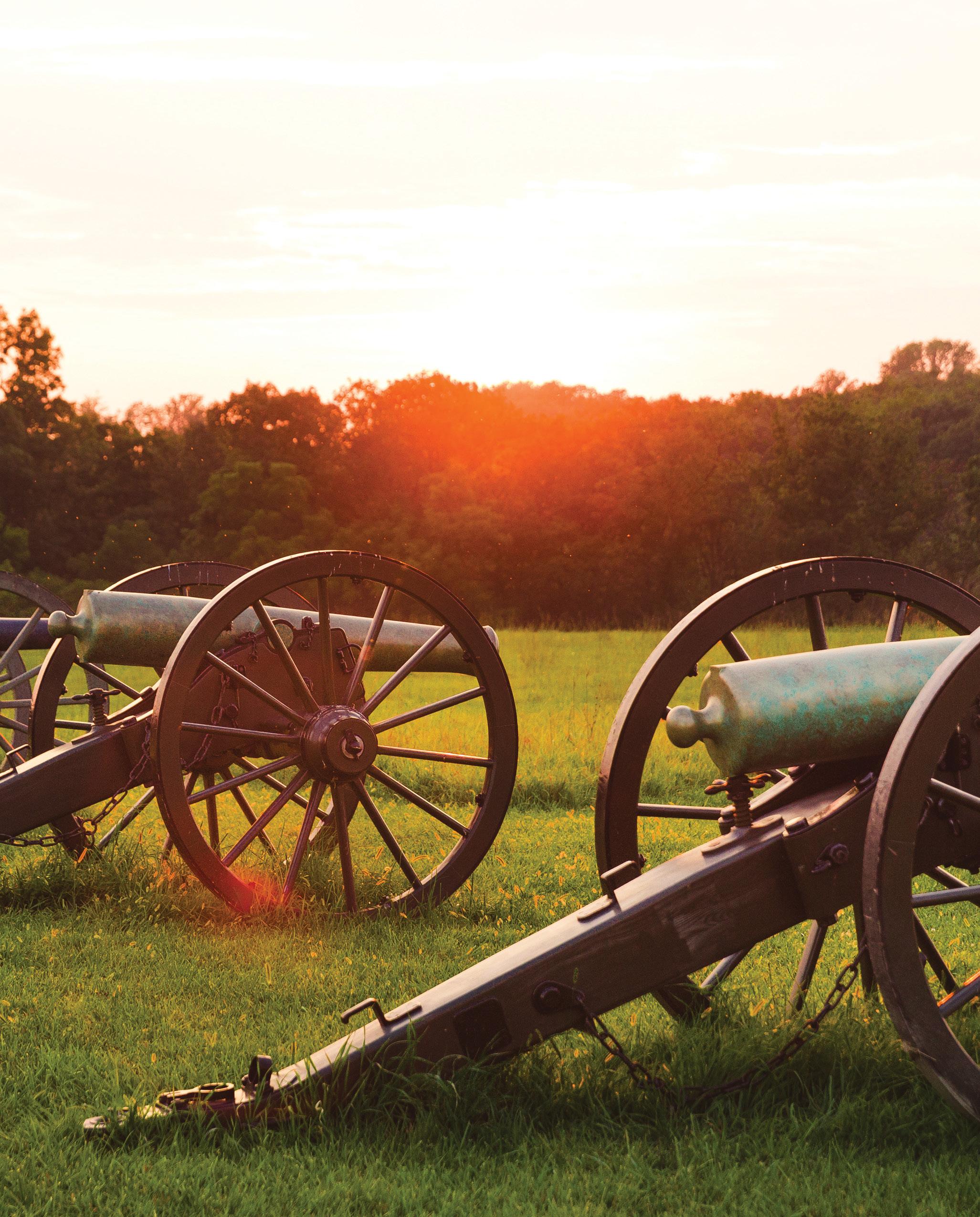
HARPERS FERRY BATTLEFIELD, FRYE SAYS, “IS A WONDERFUL COMBINATION OF BEAUTY AND HISTORY.”
telling its story or standing on the battlefield itself, on which remarkable beauty stands juxtaposed with the ugliness of war. It is, he said, “a wonderful combination of beauty and history.”
The site, he points out, is easy to access with multiple options for every interest and schedule. Frye’s favorite is the self-guided walking tour, where there is so much to see over a short distance, starting with what he calls the Old Town (others call it the Lower Town), which sits at the confluence between the Potomac and Shenandoah rivers and marks the lowest point in the state.
“It’s very easy to experience because there are so many exhibits that cover all aspects of Harpers Ferry history. It is where John Brown launched his famous war against slavery. The Appalachian Trail runs through Old Town, so even if you take 20 steps on it you can tell people you walked the Appalachian Trail.” You can also, he points out, see three states, Maryland, Virginia, and West Virginia from there. “If you only have a few hours,” Frye added, “Old Town is a must.”
Those with a little more time can start their experience in Old Town before taking a driving tour of the battlefield that will include five to six stops and the chance to hear the story of the battlefield and visit exhibits located throughout the park.
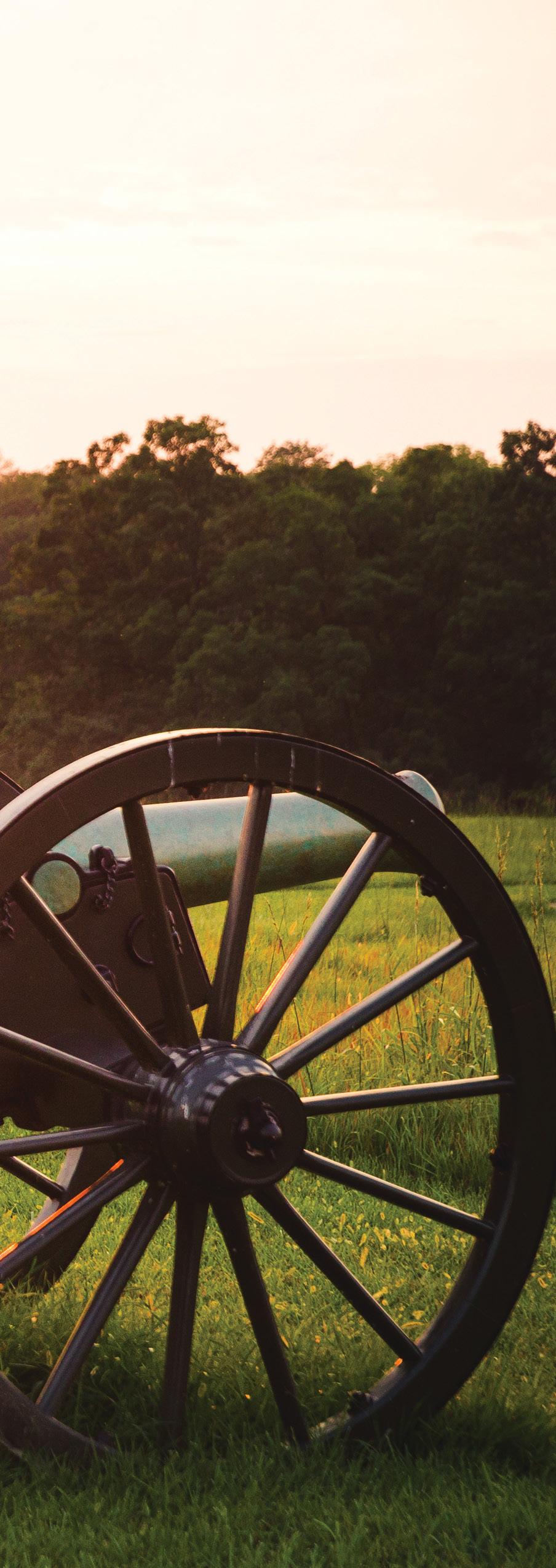
And if you have a whole day? “My goodness, then you want to do a little bit of walking,” Frye said. “We have 25 miles of trails in the National Park, and the bulk of those trails are on the battlefields, so you can just park and walk in the footsteps of history.”’
The footsteps of history are never far from Frye’s heart, or his life, even in his retirement. He is speaking to me from his lovingly restored Civil War-era home, which once served for nearly two weeks as headquarters for Union General Ambrose Burnside. Burnside would arrive there about 10 days after the Battle of Harpers Ferry and would famously host none other than President Abraham Lincoln there for a meeting. It’s something Frye is reminded of each time he walks on the floorboards of what he calls his “self-made museum,” which he shares with his wife and two Boston Terriers, one named “General Grant,” and the other named after Grant’s wife, Julia. With a built-in historian’s aversion to bias, Frye is quick to point out that the dogs’ predecessors had represented both the Union and Confederate states with the names “Mr. Lincoln” and “Bonnie Blue.”
Frye will never leave his “work” as a historian behind because it has always been so much more than work to him. He continues to write books and give lectures and tours. Retirement, he says, just means he does it on his time.
“I tell people that I have left Harpers Ferry, but Harpers Ferry will never leave me,” he said, as we ended our conversation. “Harpers Ferry is more than the ground under my feet, and more than my home. It’s my soul. Throughout my career I used to say that I don’t come to Harpers Ferry to work, I come to Harpers Ferry to worship. This is a shrine to the evolution of the American story, and a shrine also to Mother Nature’s evolution.”
 STORY BY HANK SHAW
PHOTOS BY HOLLY A. HEYSER
STORY BY HANK SHAW
PHOTOS BY HOLLY A. HEYSER
Brunswick stew is an iconic Southern dish, stuffed with controversy as well as pretty much everything else in your garden. After researching dozens of recipes dating back to 1855, I’ve come up with a Brunswick stew recipe I think represents the tradition well and is as easy or as hard as you want to make it.
And while yes, squirrel is the traditional meat in this stew, even many 19th Century recipes use easier-to-find meats. More on that in a bit.
I might as well start by busting the myth that Brunswick stew comes from Georgia. There is no evidence of this stew being made in Georgia earlier than the 1890s, while there are lots of references predating that coming from Virginia, and in fact the first reference to Brunswick stew in Georgia refers to it as “an old Virginia stew.”
The absolute first reference to Brunswick stew I could find is in a novel called “The Hidden Path,” written in 1855: “There are nothing but little nubbins with not more than a dozen grains to the ear, heaving a sigh at the consequent delay of the Brunswick stew she had hoped to have smoking upon her board that day.”
As you can see, no details, just that it’s a thing. The author assumed people knew what Brunswick stew was.
Officially, Brunswick stew was first made by Jimmy Matthews, the camp cook for a party of rich Virginians, in 1828. There’s a plaque in Brunswick County, Virginia, to this effect. While the rich people were off hunting something grander, so the story goes, Jimmy went out squirrel hunting for the camp, got a few, then made this stew.
Exactly who Jimmy Matthews was is a mystery. Some sources say he was a slave, others a poor white man who was employed by Creed Haskins, one of the hunters.
This prototype of Brunswick stew hinged on squirrels, stale bread, onions and butter. Sounds like a typical hunt camp throw-together even now. Only later did the stew become a repository for an entire garden.
While this is the written history of Brunswick stew, you can clearly see its native origins—corn, beans, tomatoes, potatoes, game meats, all thrown in a pot with no initial browning. It’s very close to the idea of a traditional native Three Sisters stew.
One interesting note is that in its early versions, Brunswick stew appears to be a little spicy. See this description from the Southern Literary Messenger in 1863:
There was no other dish but the Brunswick stew and that was enough, for it contained all the meats and juices of the forest and garden magnificently conglomerated and sublimed by the potent essence of fiery Cayenne pod upon pod lavishly thrown in a dish capacious as the Mediterranean held it and it lowered aloft like Vesuvius smoking gloriously.
Brunswick stew continues to evolve throughout the 1800s and early 1900s, and it’s that second period where Georgia-style Brunswick stew comes into play: It’s main difference is that it includes either leftover pulled pork barbecue, or fresh barbecue, and often some of the sauce.
Mine does neither, as this is a Virginia Brunswick stew.
With very few exceptions, all recipes for Brunswick stew include the following:
• Meat of some sort, usually but not always lighter meats
• Lima or butter beans, fresh, frozen or dried
• Tomatoes, often both pureed and diced
• Corn, either sweet or field corn, almost always fresh or thawed
• Lots of butter mixed in at the end of cooking
• Potatoes, usually but not always peeled
• Salt pork, bacon or ham
• Onion, occasionally sautéed but usually not
• Okra and cayenne pepper
• Worcestershire sauce
• Fresh parsley as a garnish
I’ve seen 19th Century recipes with sweet potato and carrots, too, but those are rare.
As I mentioned above, squirrel is the soul of a Brunswick stew recipe, but even in the 1800s, many recipes left it out in favor of chicken, pork or rabbit. A few recipes use beef shank.
“Mrs. Elliot’s Housewife,” written in 1879, calls for chicken or squirrels, but says duck or turkey are fine. Use legs if you’re going that route.
This is similar to, but not exactly the same as, my Brunswick stew recipe in my book “Pheasant, Quail, Cottontail” (H&H Books, 2018, 336 pages). That one’s great, but this recipe hews closer to the way all those 19th Century recipes did it.
Unlike a lot of modern stews, this one starts with water and/ or broth, and the meats. No browning, no initial sautéing. None of the 19th Century recipes do the initial sear, and browning of meats and onions is really a French technique we Americans picked up in the late 1800s.
You add your meat, ideally squirrels and whatever else you want, simmer this gently, then add other ingredients as they ought to be. What that means is that a Brunswick stew starts as broth and meat, and only once you can strip the meat from the bone do other ingredients arrive at the party.
The meat, indeed the whole stew, is meant to be kinda hammered, as in cooked a long, long time—very much like Brunswick stew’s cousin, Kentucky burgoo.
This is an excellent candidate for a slow cooker because there is no browning step. Just put everything in if you want, and let it roll all day until you’re ready to eat.
A few things should go in at the end, though. Definitely the butter, and you’ll want to tinker with the flavors with Worcestershire and or Tabasco sauce, salt and black pepper.
Once made, Brunswick stew freezes very well and you can pressure-can it, too. You’ll want to follow your pressure canner’s instructions, but in general it will be 75 minutes at 10 psi (if you live from sea level up to 1000 ft in altitude).
It will keep a week or so in the fridge.
This is an amalgam of many recipes for Brunswick stew dating back to the 1870s. Generally speaking this is a Virginia version, not a Georgia version. My recipe is "deluxe" in that it has all the optional ingredients, but you can use whatever you have on hand, skipping what you don't. Meats are variable, too.
Prep Time 30 mins
Ingredients
Cook Time 4 hours
Total Time 4 hours 30 minutes
• 3 pounds squirrel meat, cut into serving pieces
• 1 large onion, chopped
• 2 quarts chicken broth
• 1 28- ounce can of crushed tomatoes
• Salt
• 2 cups diced tomato (optional)
• 1 pound potatoes, cut into chunks
• 1 pound frozen baby lima beans (or fresh)
• 1 pound corn kernels, fresh or frozen
• ½ pound okra, sliced (optional)
• 1/3 cup minced fresh parsley
• 1/4 cup butter
• ¼ cup Worcestershire sauce, or to taste
• Tabasco or other hot sauce, to taste
• Black pepper to taste
Instructions
1. Pour the broth along with another quart of water into a large, lidded pot such as a Dutch oven. Bring this to a boil, and add the onion and salt to taste. Add the squirrel or other meat and skim any foam that forms. Simmer gently until the meat is falling off the bone, anywhere from 1 to 3 hours.
2. Fish out all the meats and remove the meat from the bones; this makes the stew a lot easier to eat. Discard the bones.
3. Add all the tomatoes and the potatoes and simmer for 30 minutes.
4. Add the beans, corn and okra and simmer for another 30 minutes.
5. Stir in the remaining ingredients until well combined. Tinker with seasonings and serve. Cornbread is a nice accompaniment.
Keep in mind that when using wild game, simmer times can vary a lot.
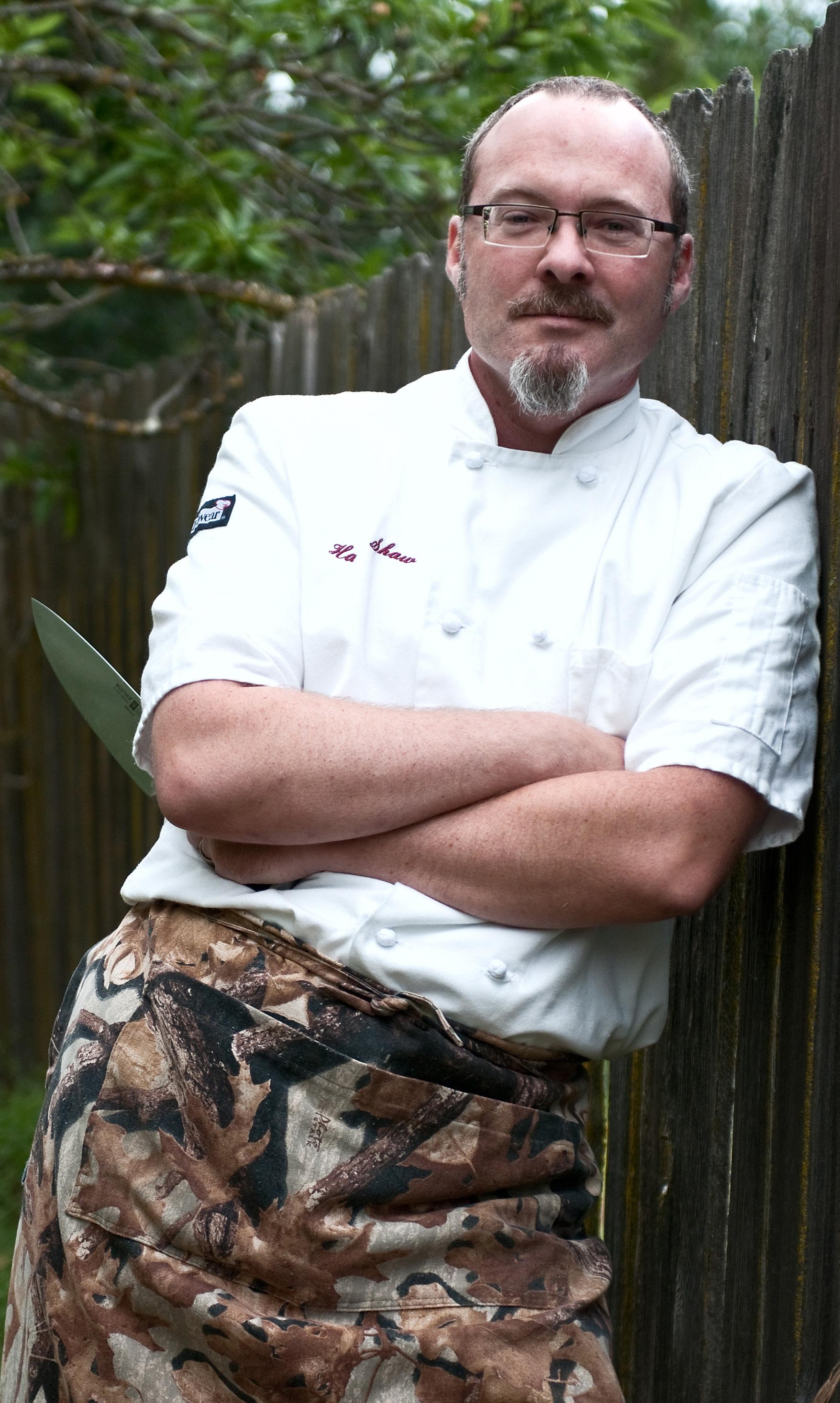
Chicken should only require maybe 90 minutes to fall off the bone.
Obviously most people won't have access to squirrels. Use chicken or rabbit instead. Other options are leftover pork barbecue, country ribs, pork shoulder or a beef or venison shank. Duck or goose legs or turkey legs are other good choices.
• Feel free to play with your own version of the stew, using the guidelines in the article above.
• I personally like this stew a little spicy, so I add either cayenne powder or fresh hot chiles to the mix. There is historical precedent for this, if it makes you feel better.
• When in doubt, cook it longer. Brunswick stew should be thick.
The Ugly TrUTh aboUT Dams is revealeD
REVIEW BY JOE SHIELDS PHOTOS COURTESY OF PATAGONIAJim Harrison was one of my favorite writers. His novel “A Good Day to Die” is a trip—literally and figuratively. Three characters—a poet who obsesses about fly fishing in cold, fast-moving streams, a drug-addled, violent Vietnam veteran and a young woman who loves both men— embark on a road trip with a case of dynamite to save the Grand Canyon by blowing up a dam they believe is being built. The premise is a dark take on the path less traveled in contemporary America, and fitting for this review.
If you fly fish, you’re aware that dams are an enemy to what we hold sacred. Although they are touted as sources
of renewable energy, hydropower dams flood large areas, force people to relocate, threaten freshwater biodiversity, disrupt subsistence fisheries and leave rivers dry—substantially affecting ecosystems.
Throughout history, humans have dammed rivers at the cost of wild fish, Indigenous peoples, forested land and healthy watersheds. Adding to the havoc of today’s climate-changeinduced weather extremes and water shortages, science says there’s no future for the business of dam-building. A new book from Patagonia offers hope for the dam-removal movement and how it will contribute to the mitigation of the climate crisis: when

we free rivers, watersheds are restored, and Earth heals itself.
In “Cracked: The Future of Dams in a Hot, Chaotic World” (Patagonia, May 2023, 320 pages) author Steven Hawley, an Oregon-based environmental journalist and documentary filmmaker, delivers the full, ugly truth about dams—a reckoning of America’s misguided attempts to control water. He also offers a pathway toward freeing our rivers.
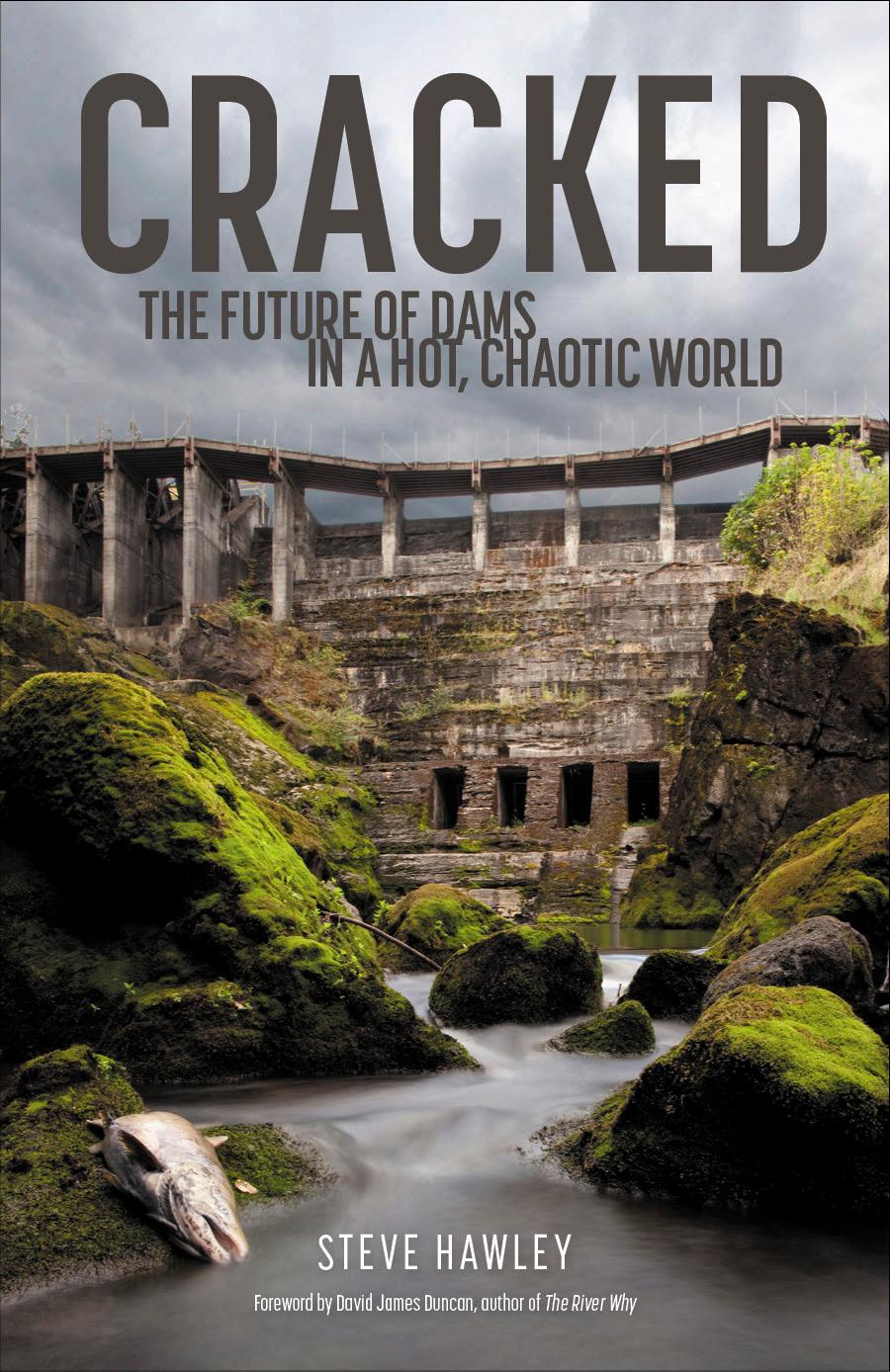
Over the past 20 years, the mess made by America’s dambuilding binge of the 20th century has come to light. Hawley highlights that what started out as arguably good government projects—to turn rivers into revenue streams—has drifted oceans
away from that original intent. As a result, water control projects’ main legacy is tainted by needless ecological destruction and a host of unnecessary cultural injustices.
“Steven Hawley has written, and Patagonia has brilliantly supported, an undamming book powerful beyond anything I thought possible in a time of cynicism, greed, and cave-troll politics,” writes David James Duncan, author of “The River Why” (Bantam, 1983) in the new book’s foreword. “With calm clarity, this book shows us how to judge the value of a dam and begin removing the dangerous and valueless ones. This book reminds us that it is rivers, and not reservoirs, that allow natural selection
Steven Hawley is a writer and filmmaker from Hood River, Ore. He is the writer and co-producer of an award-winning documentary “Dammed to Extinction” (2019), and the author of ”Recovering a Lost River” (Beacon Press, 2011). He was among the first to write about the historic agreement to tear out Edwards Dam on the Kennebec River in Maine. Since then, his work has appeared in High Country News, OnEarth, The Oregonian, Missoula Independent and other publications. He’s also a contributor at The Drake,
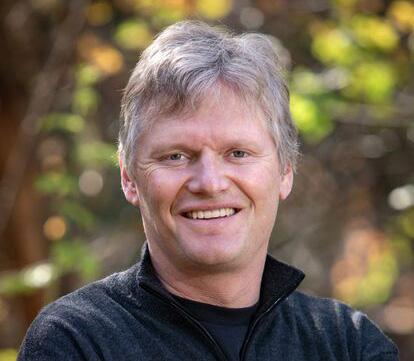
to select naturally the biodiversity to diversify.”
“Cracked” is a speed date with the history of water control—its dams, diversions and canals, and just as importantly, the politics and power that evolved with them. Examples from the American West reveal that the costs of building and maintaining a sprawling water storage and delivery complex in a world that is becoming increasingly dry under the ravages of climate chaos—are well beyond the benefits. Success stories from Patagonia and the Blue Heart of Europe point to a possible future where rivers run free.
There are currently over 90,000 dams 15 feet tall or higher in the United States, according to the U.S. Army Corps of Engineers. In a report by the World Wildlife Fund, freshwater species in North America have declined by 83% since 1970. The estimated 800,000 dams in the world can’t be blamed for destroying the earth’s entire biological inheritance, but they play an outsized role in that destruction.

The chapter “Dam Removal 101” equips activists with tools, resources and success stories for cleaning up these man-made messes, ensuring that future generations don’t live with the mistakes of the past. Hawley walks readers through the process of campaign organizing, goal setting, financing, permitting, and the final step of site restoration and monitoring.
“Dam removal is not purely an engineering game, nor strictly an exercise in ecological improvement,” says Hawley. “It’s a grassroots organizing project, an endeavor in door-to-door diplomacy, a revival of the practice of community-level democracy to which politicians are always vaguely alluding, and which the vast majority can’t quite seem to remember how to perform.”
Published nearly 10 years after Patagonia’s groundbreaking documentary “DamNation,” “Cracked” underlines the company’s long-standing commitment to freeing rivers and saving wild fish. Hawley’s new book (hardcover retail price: $28) is available at leading booksellers and from the publisher at Patagonia.com.




